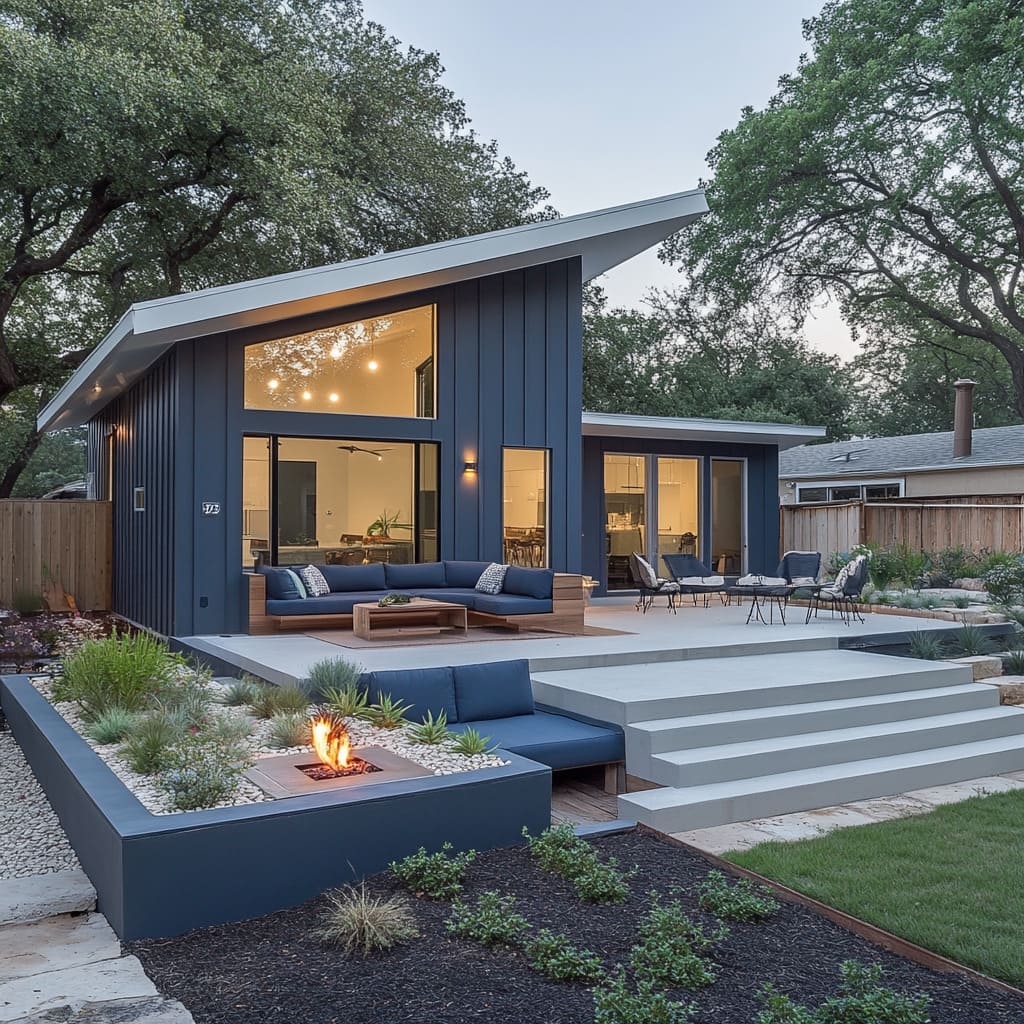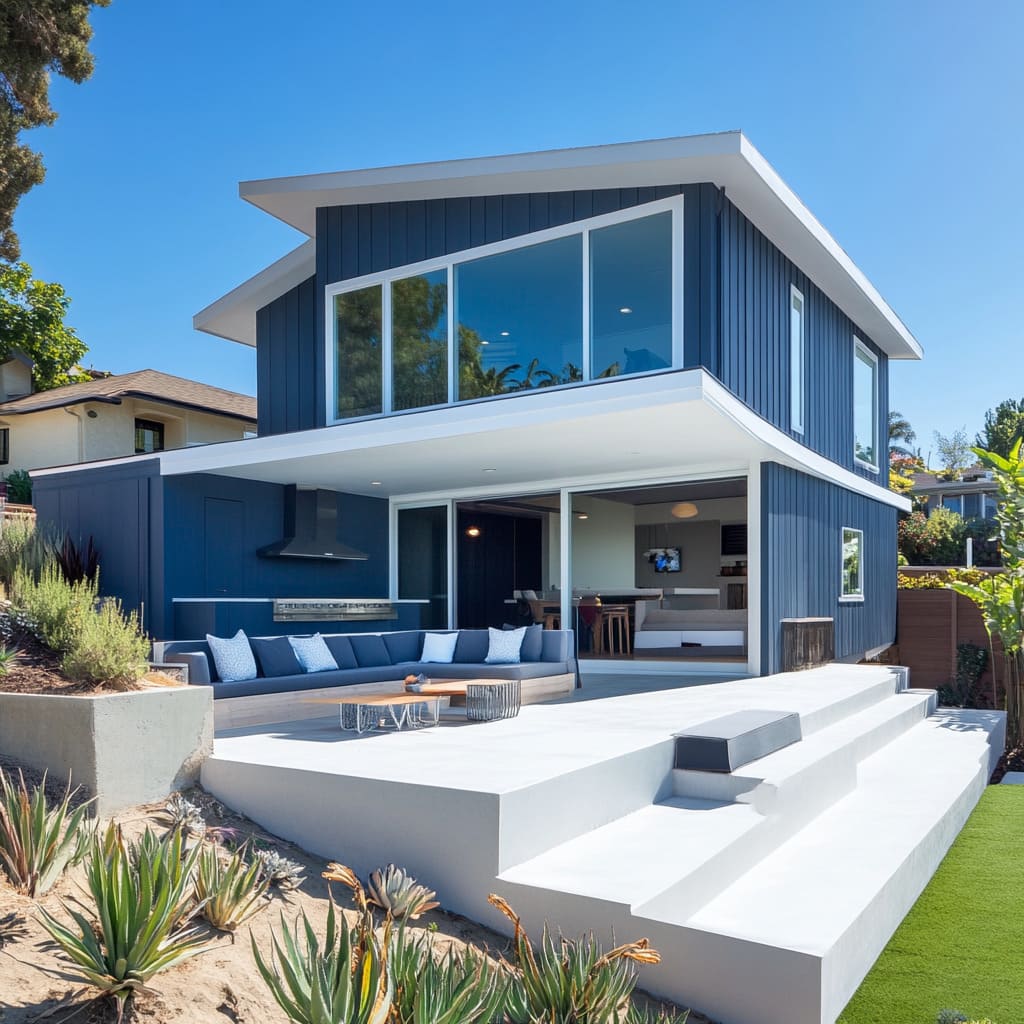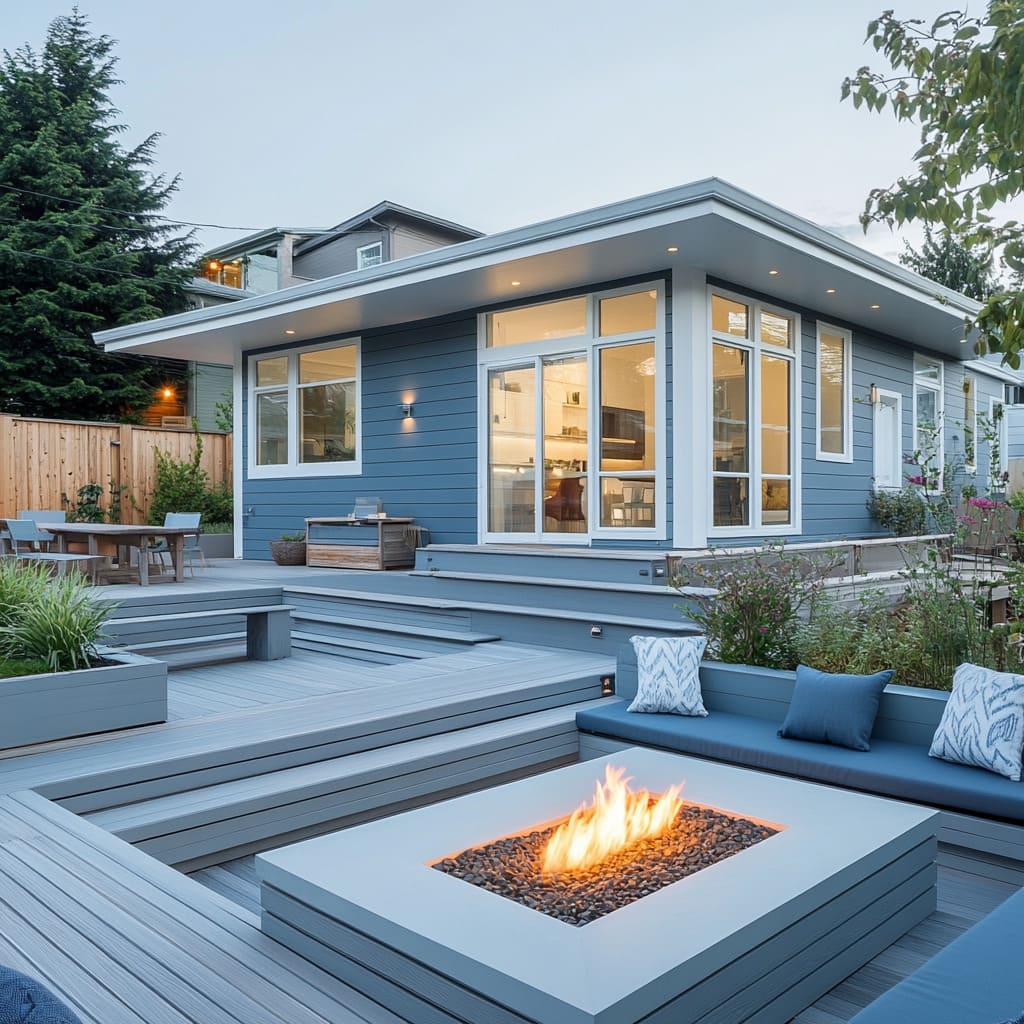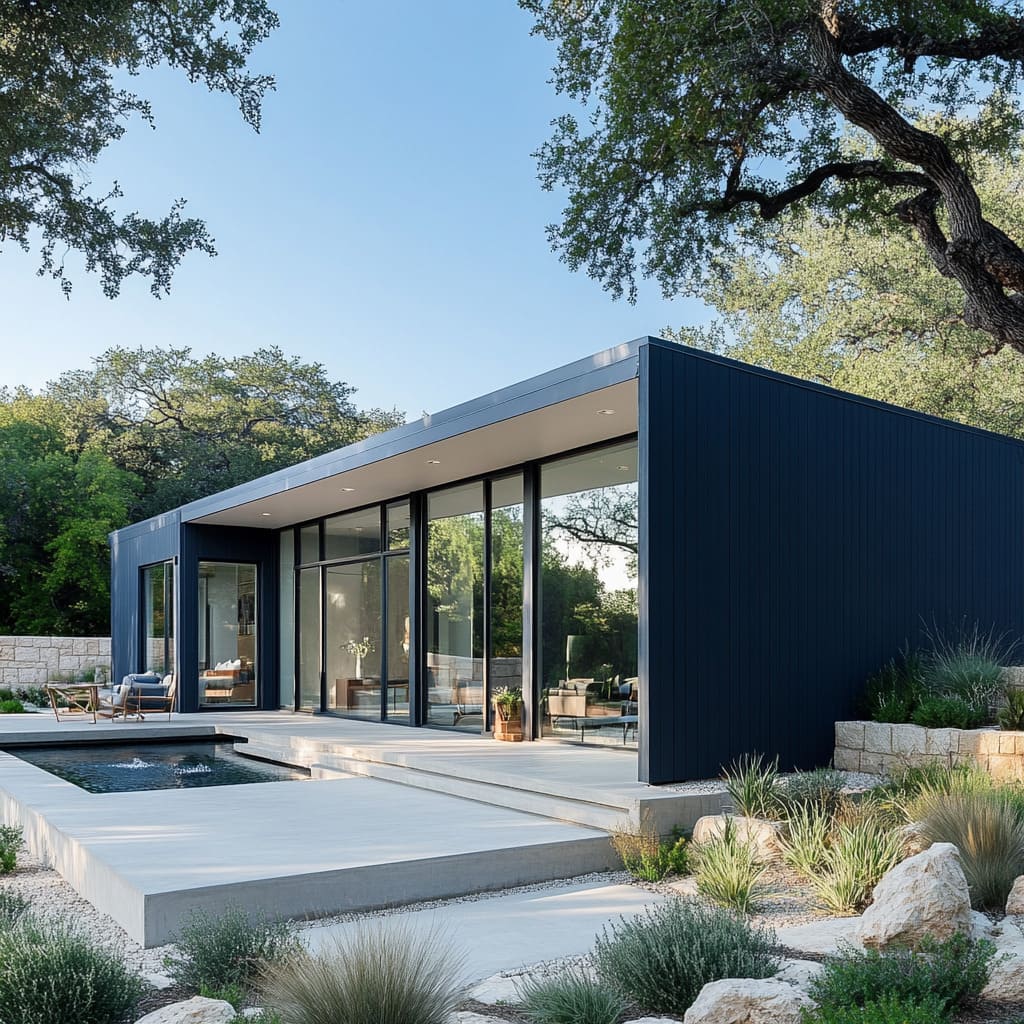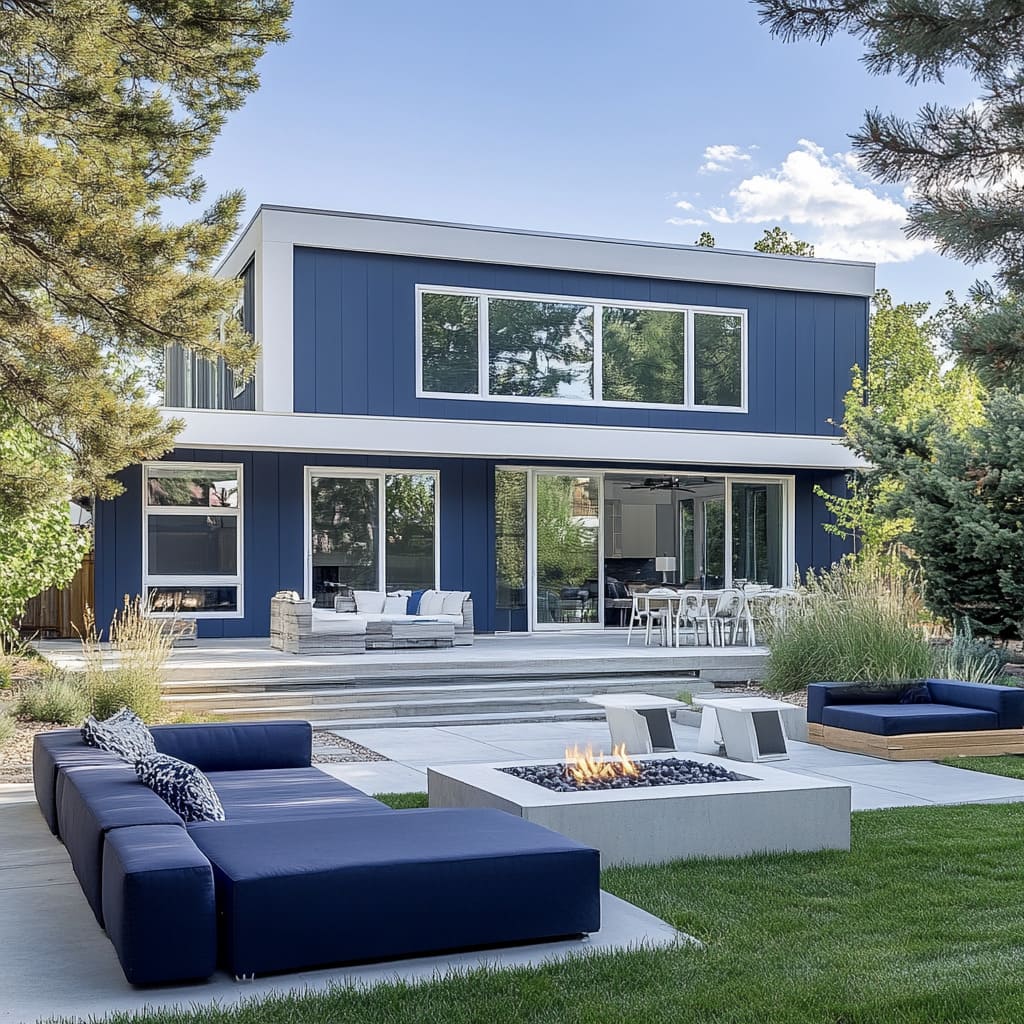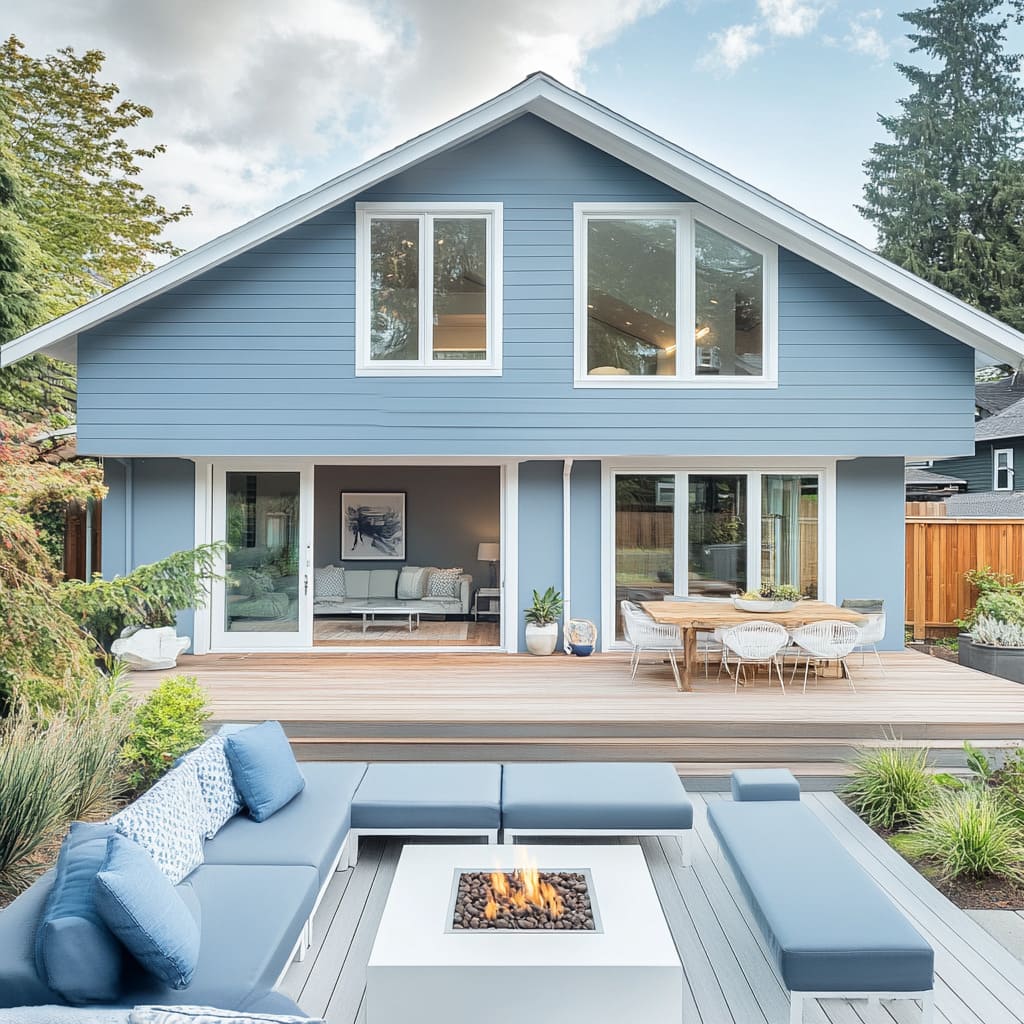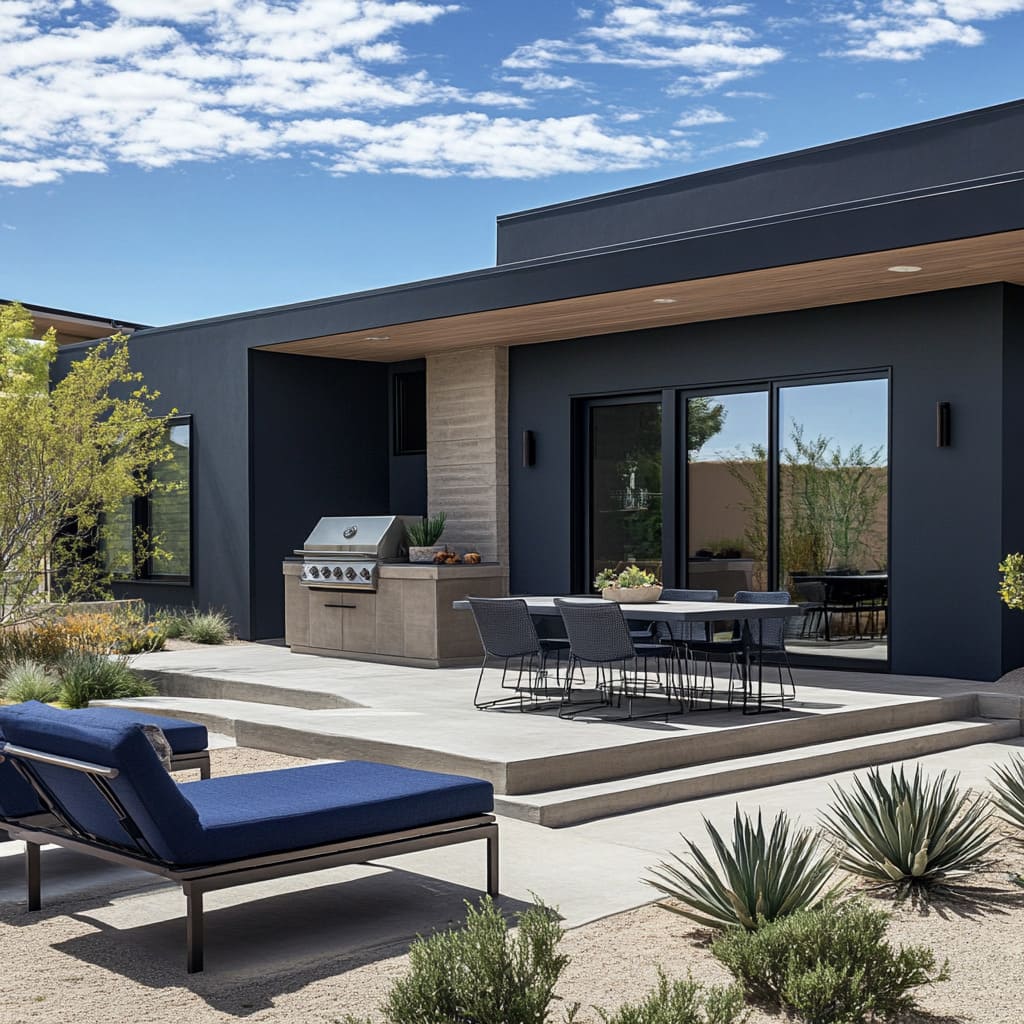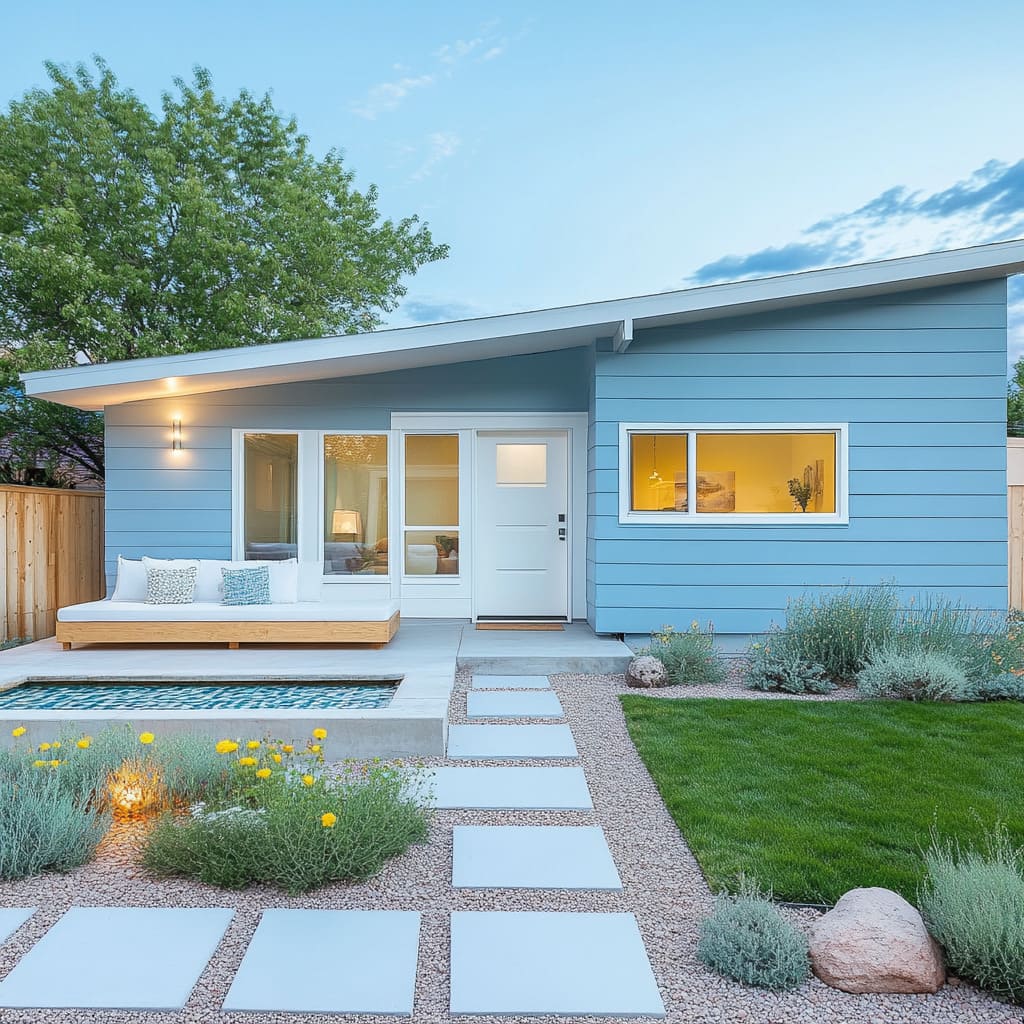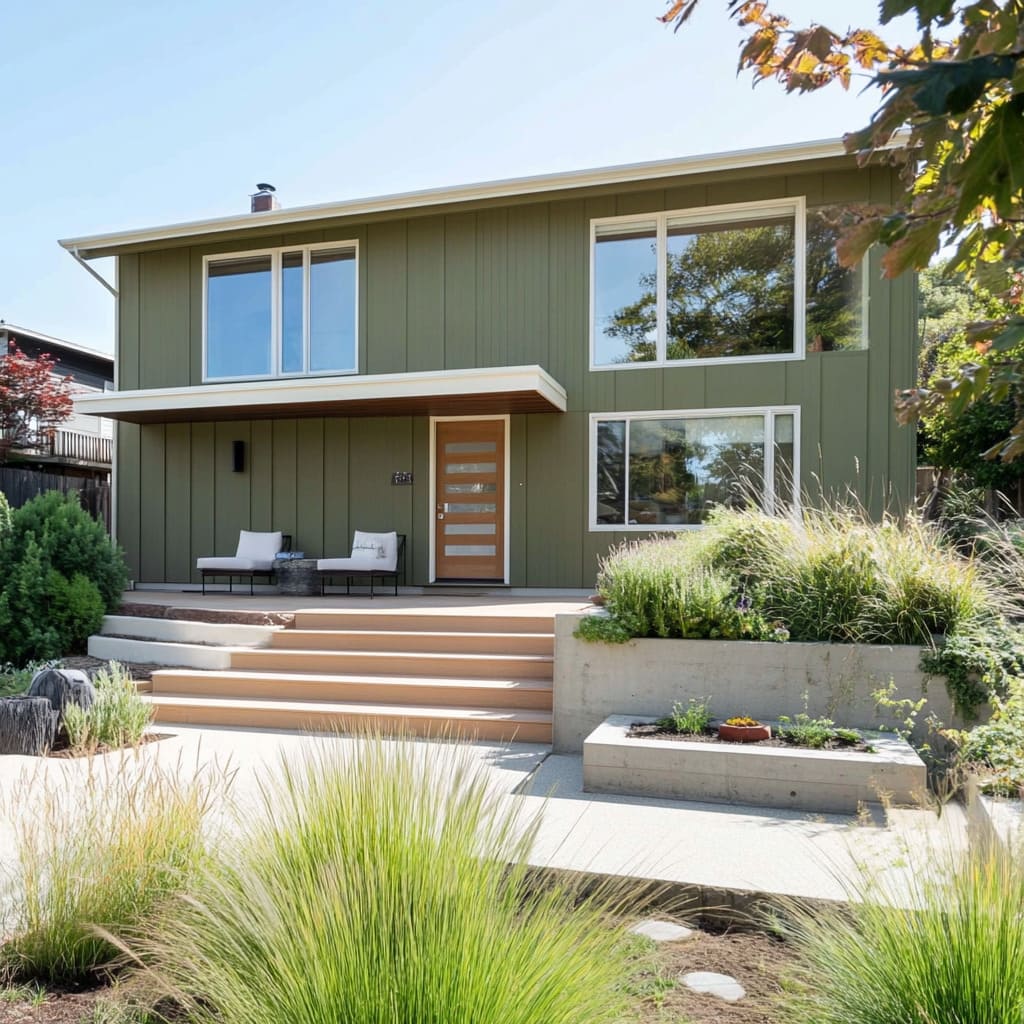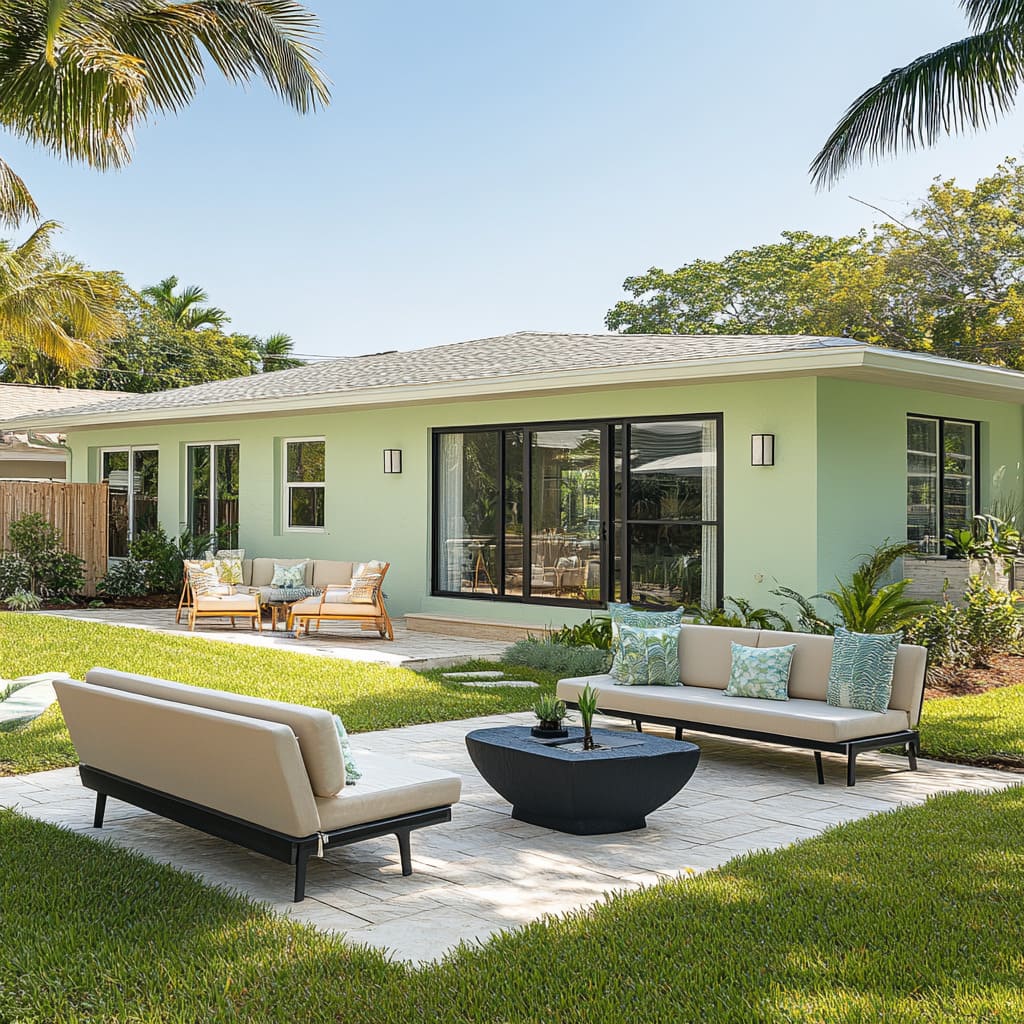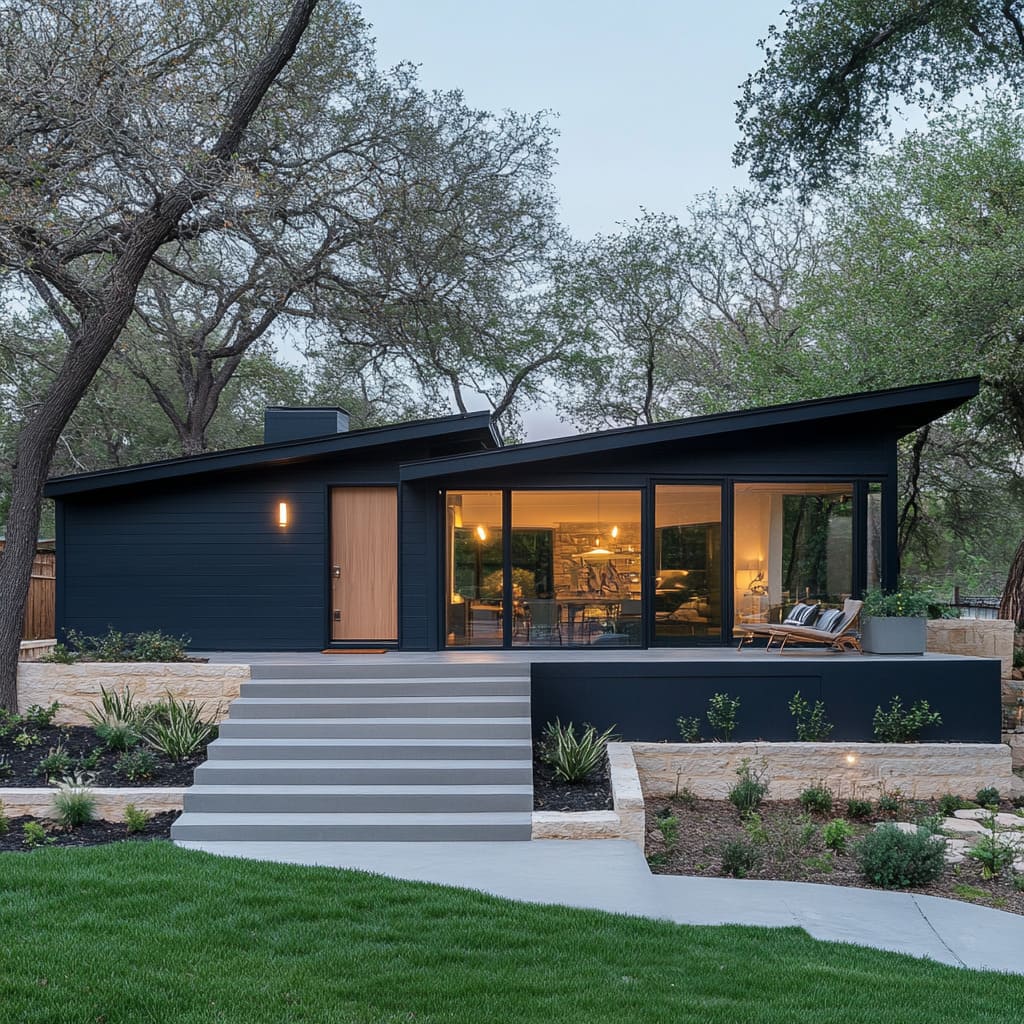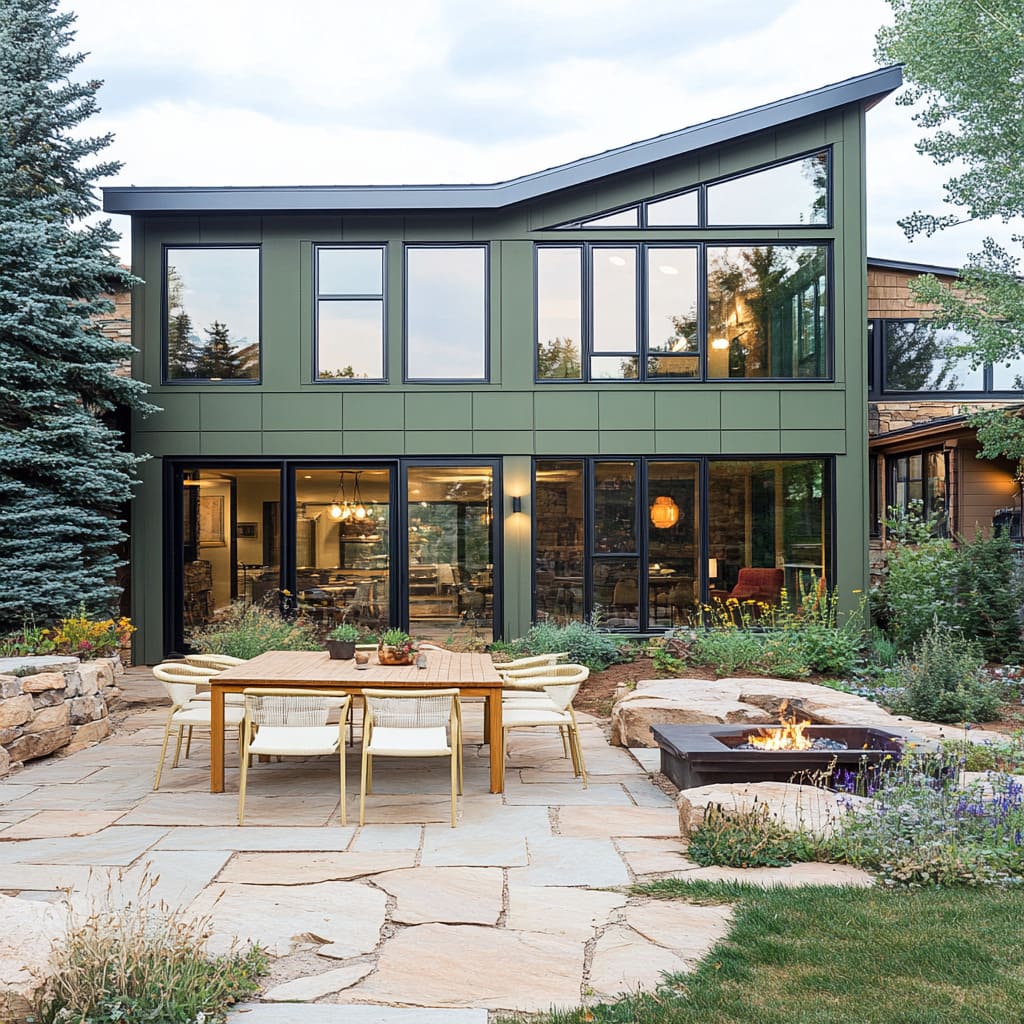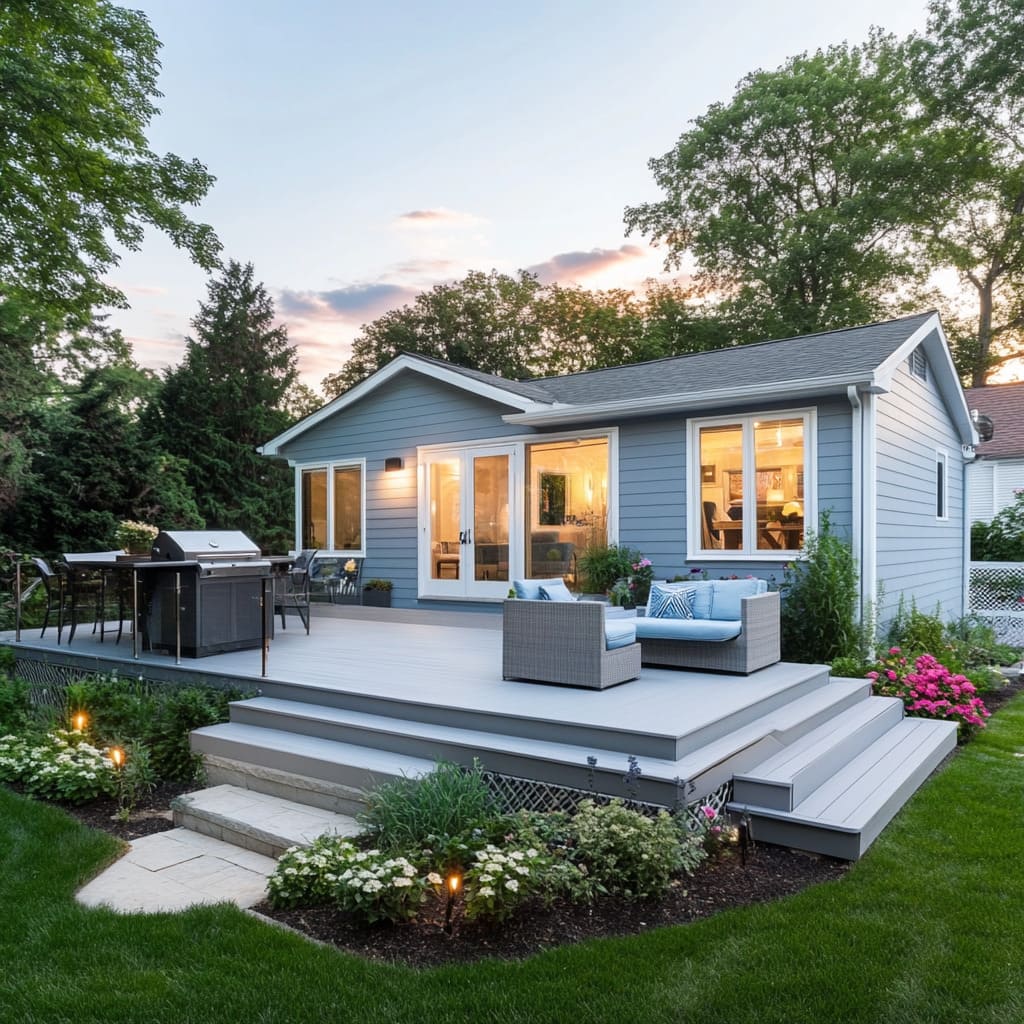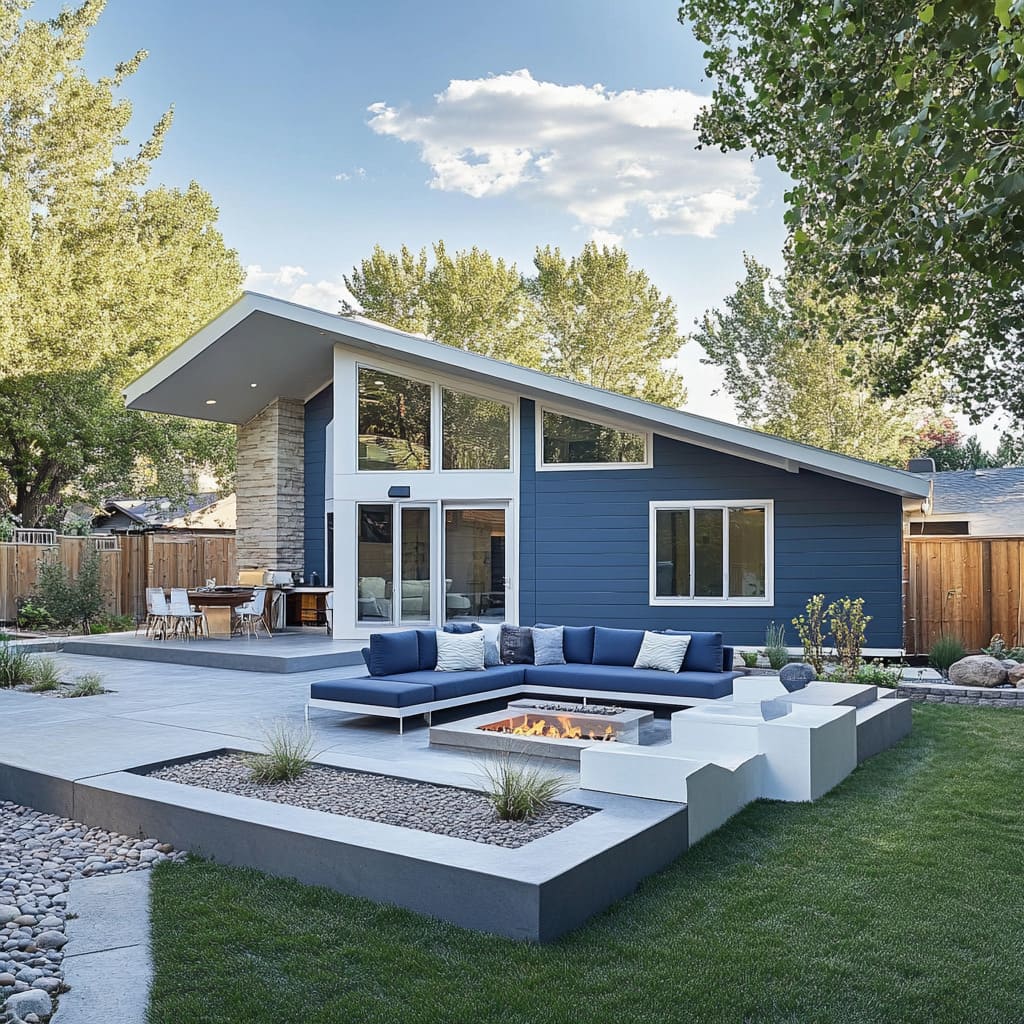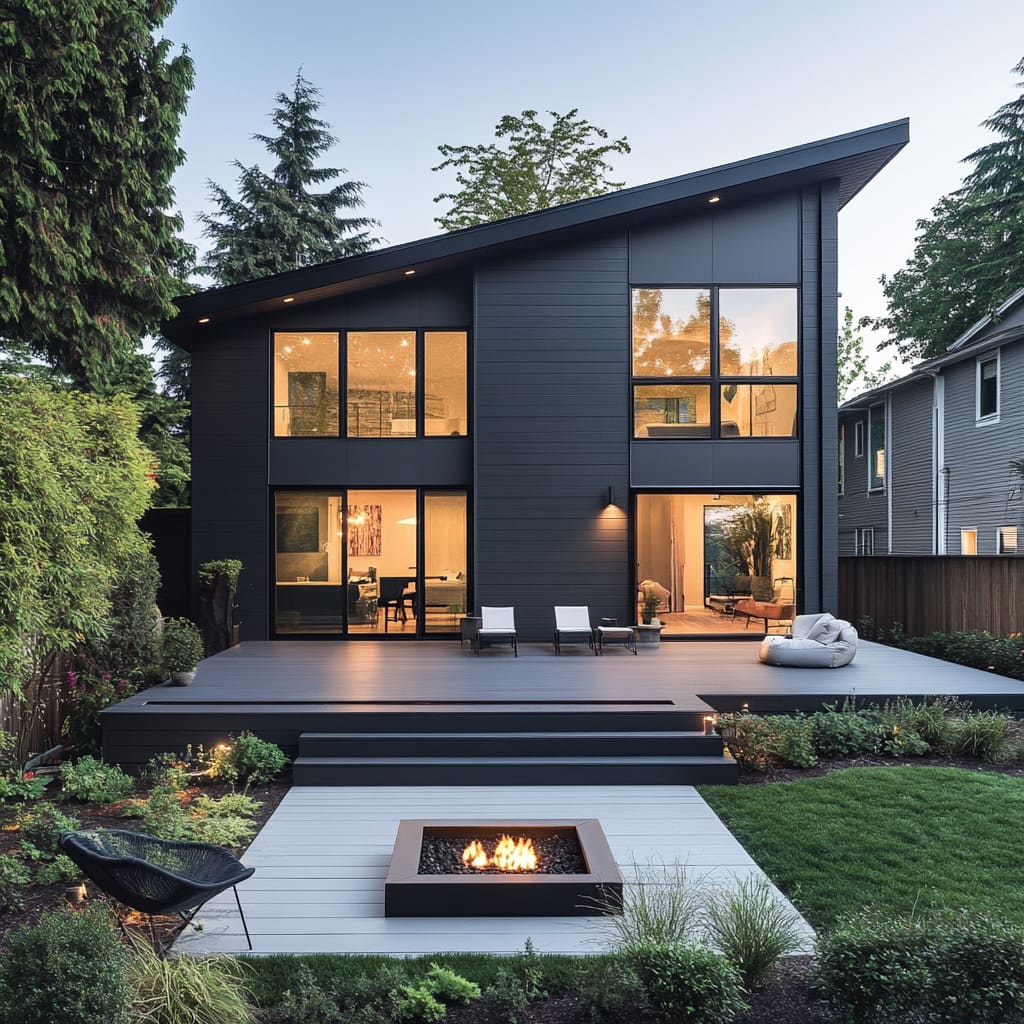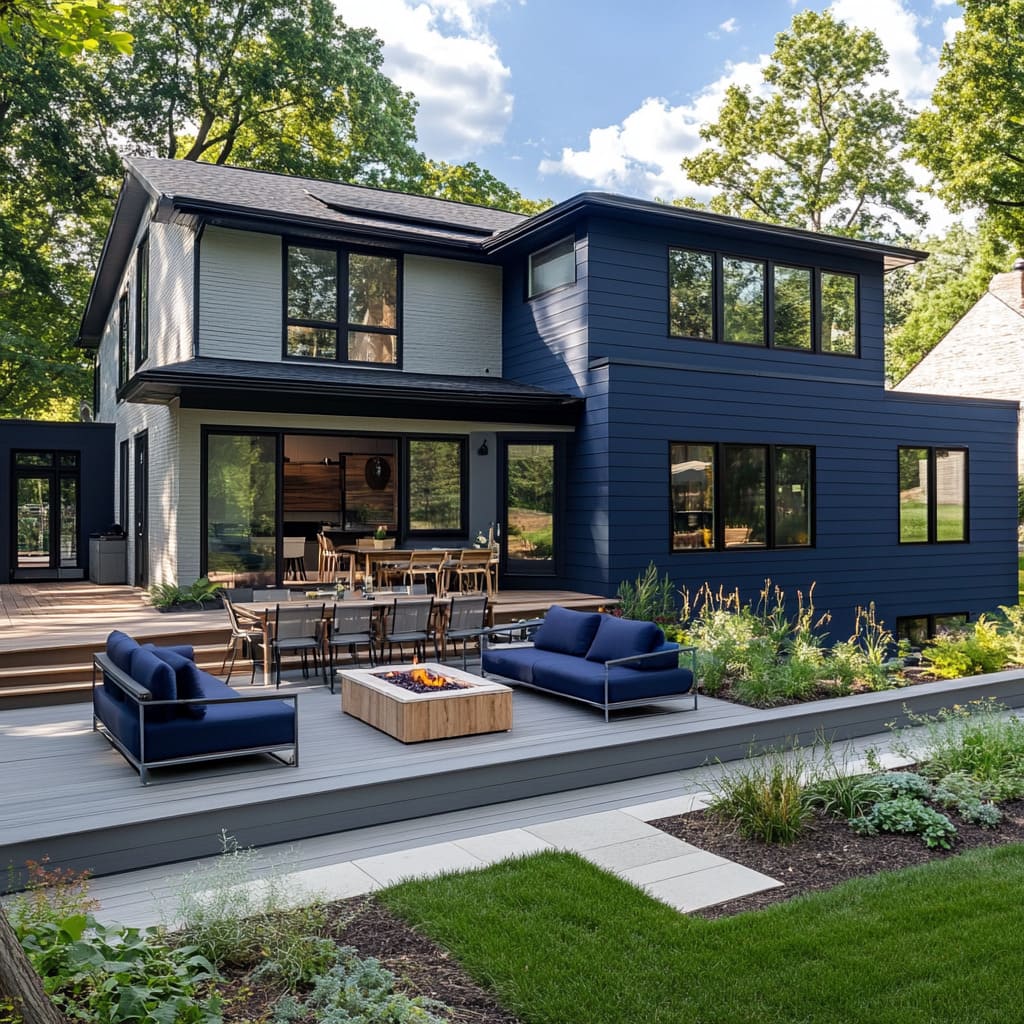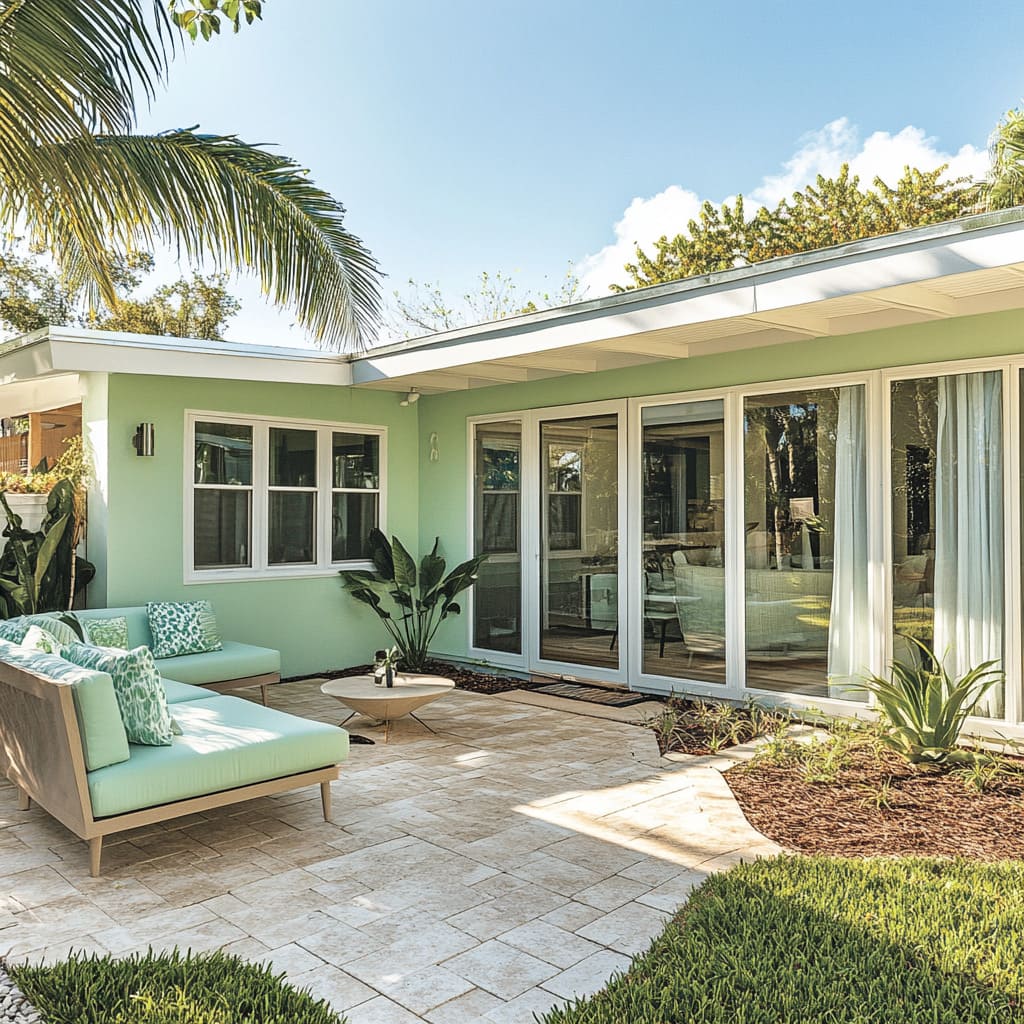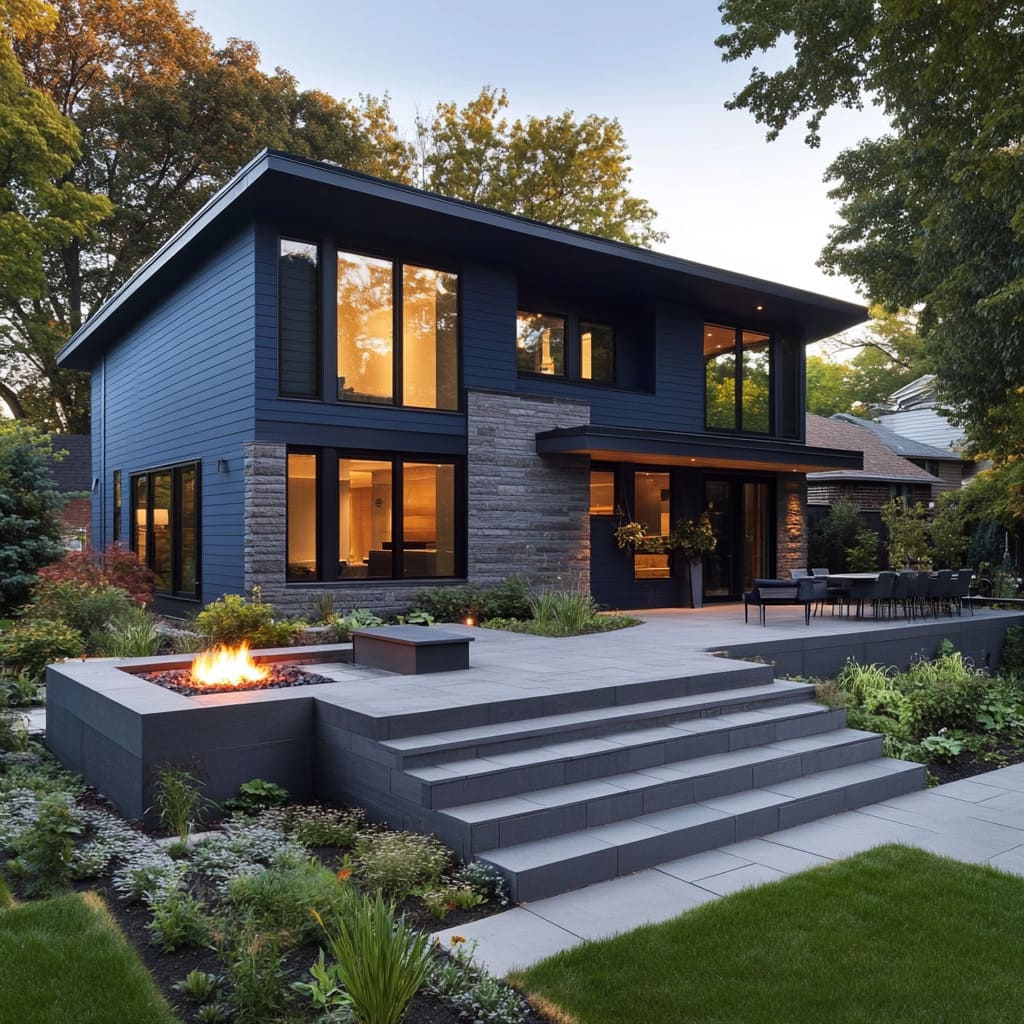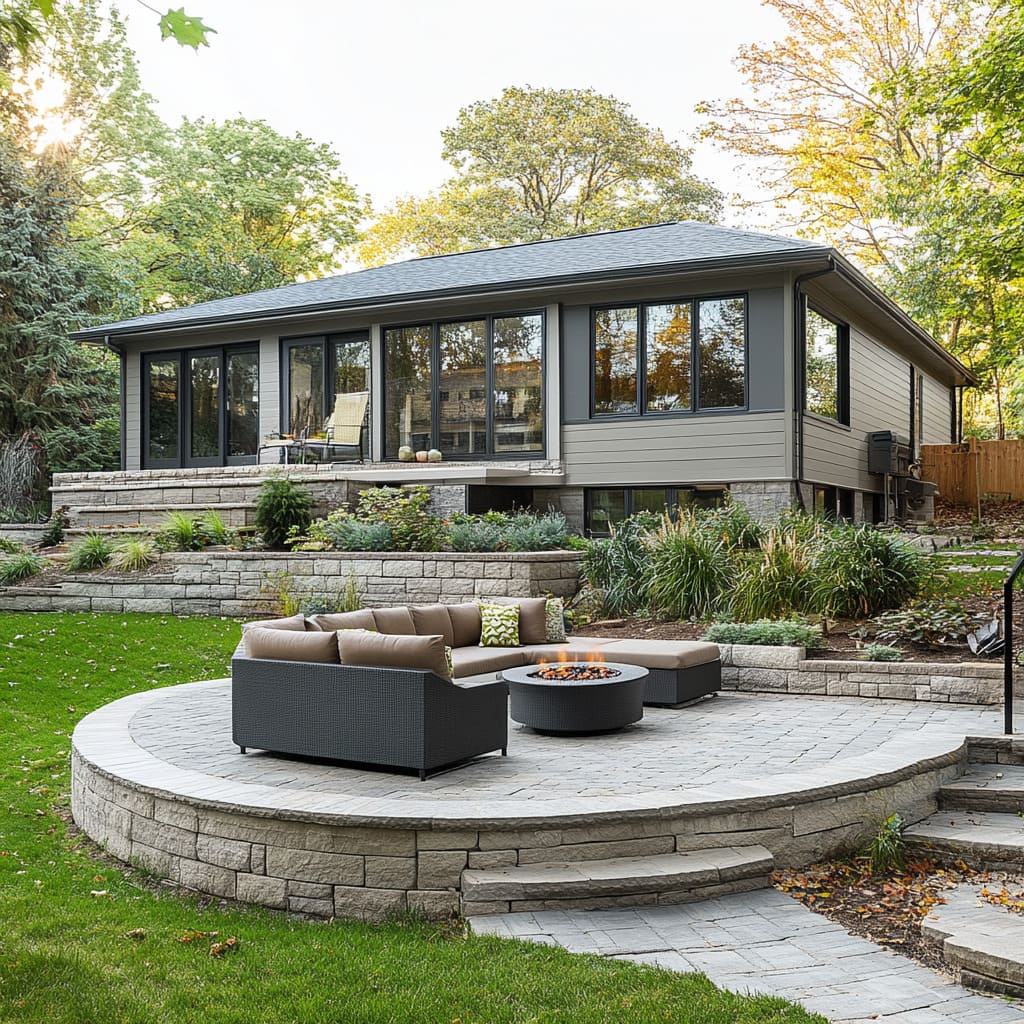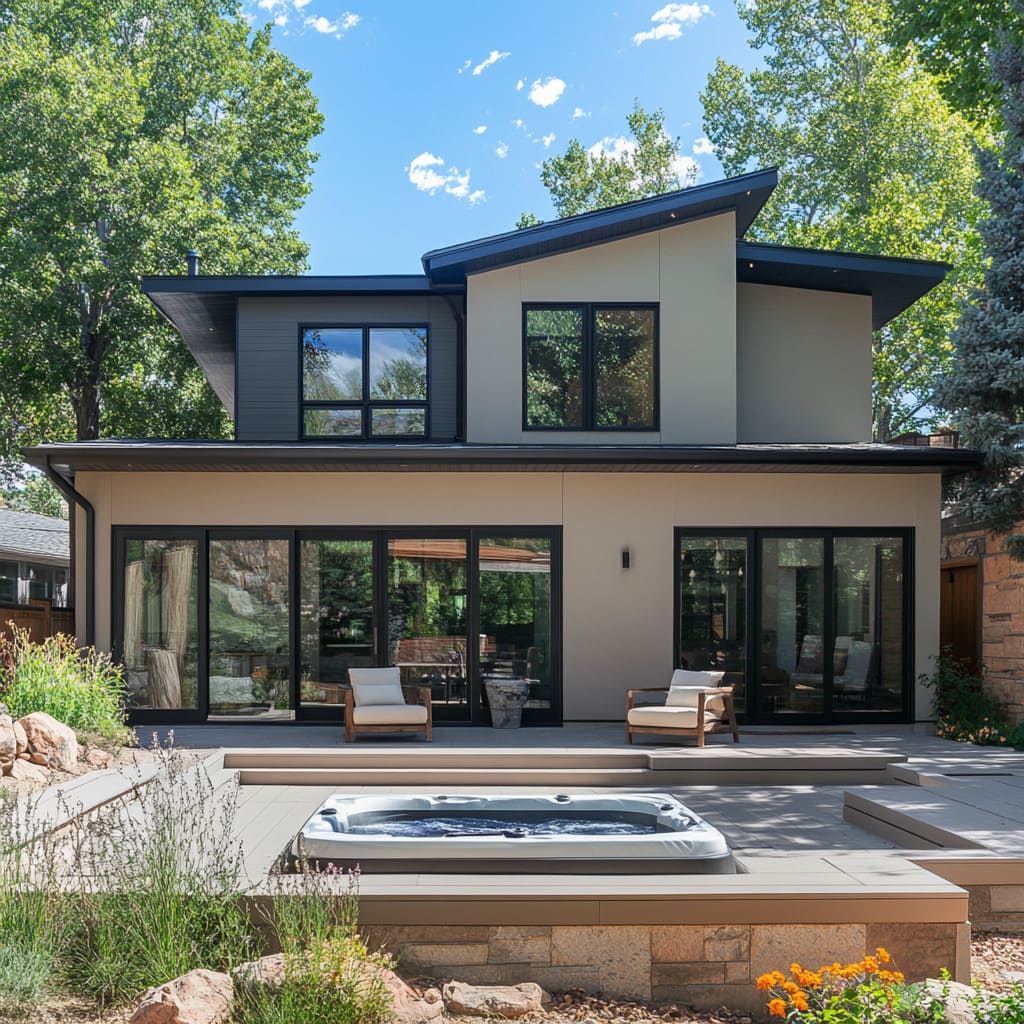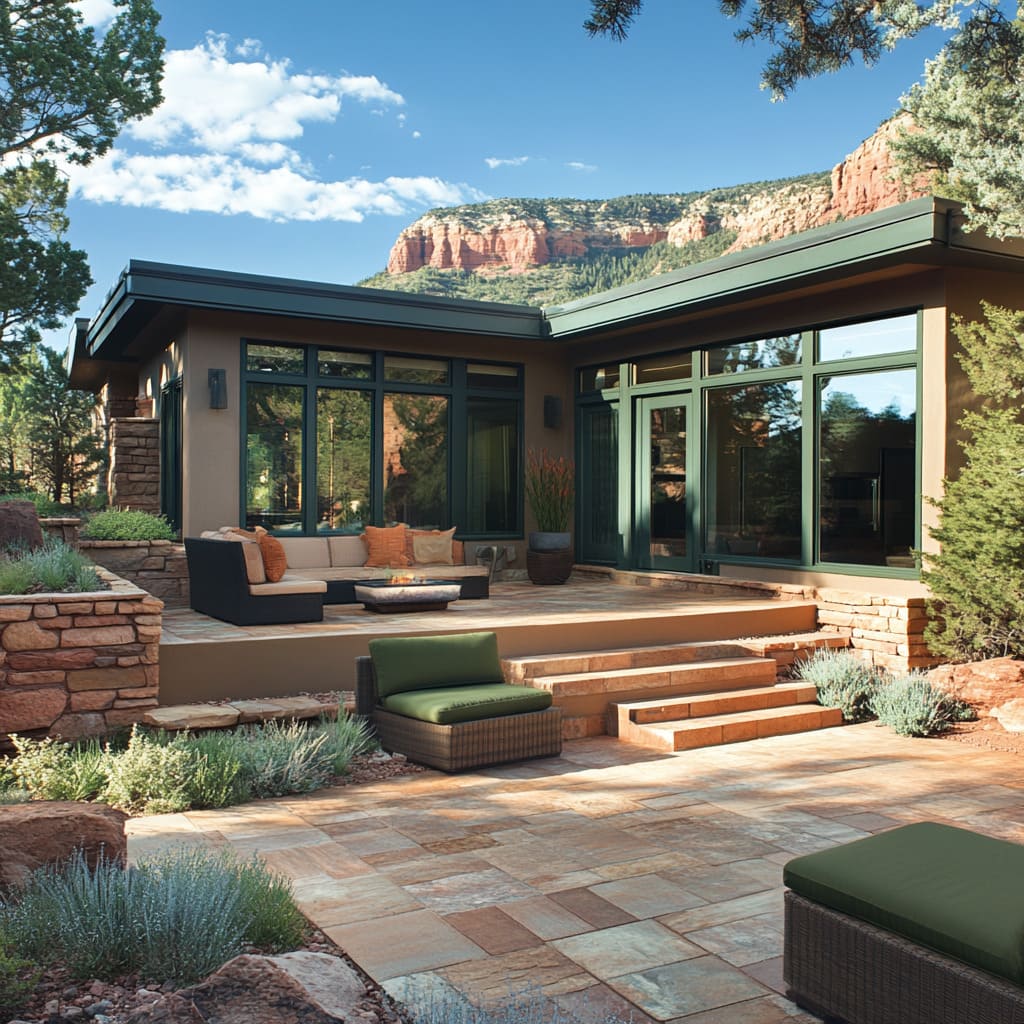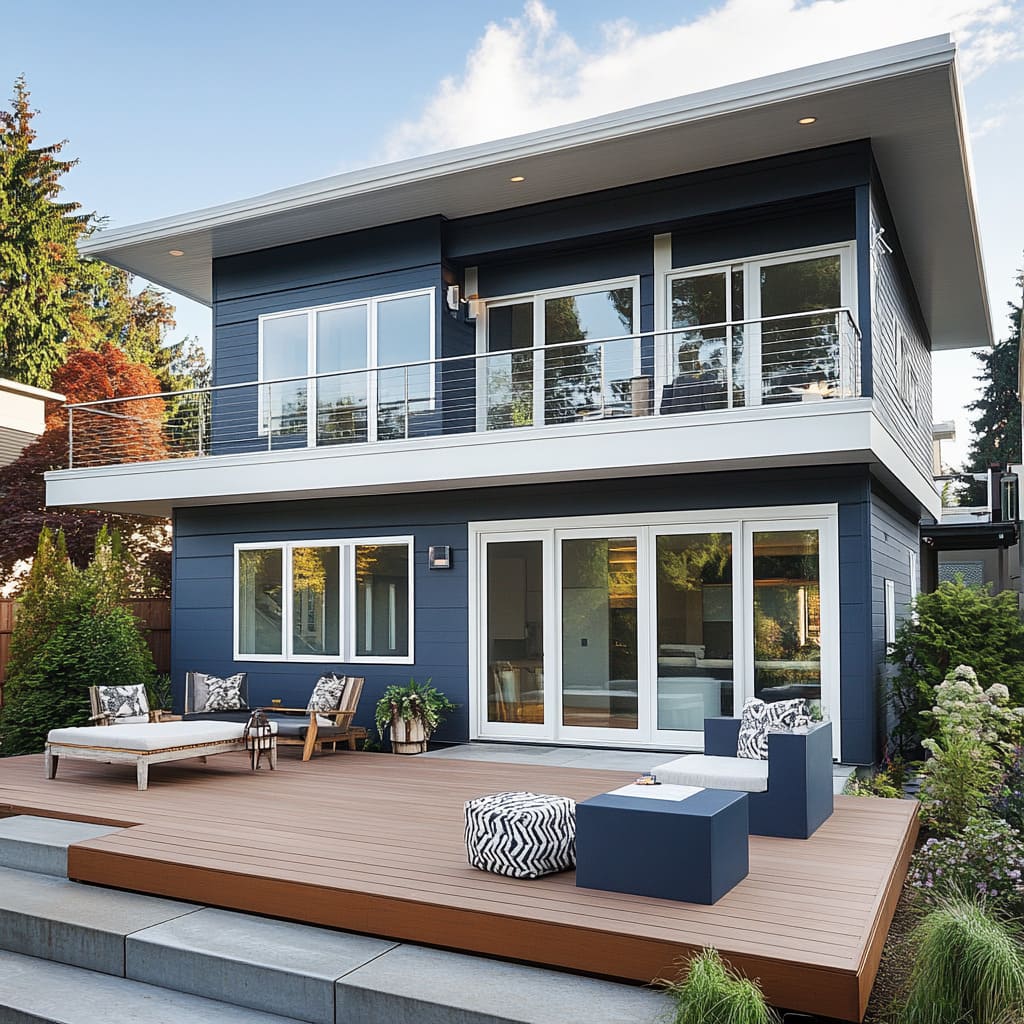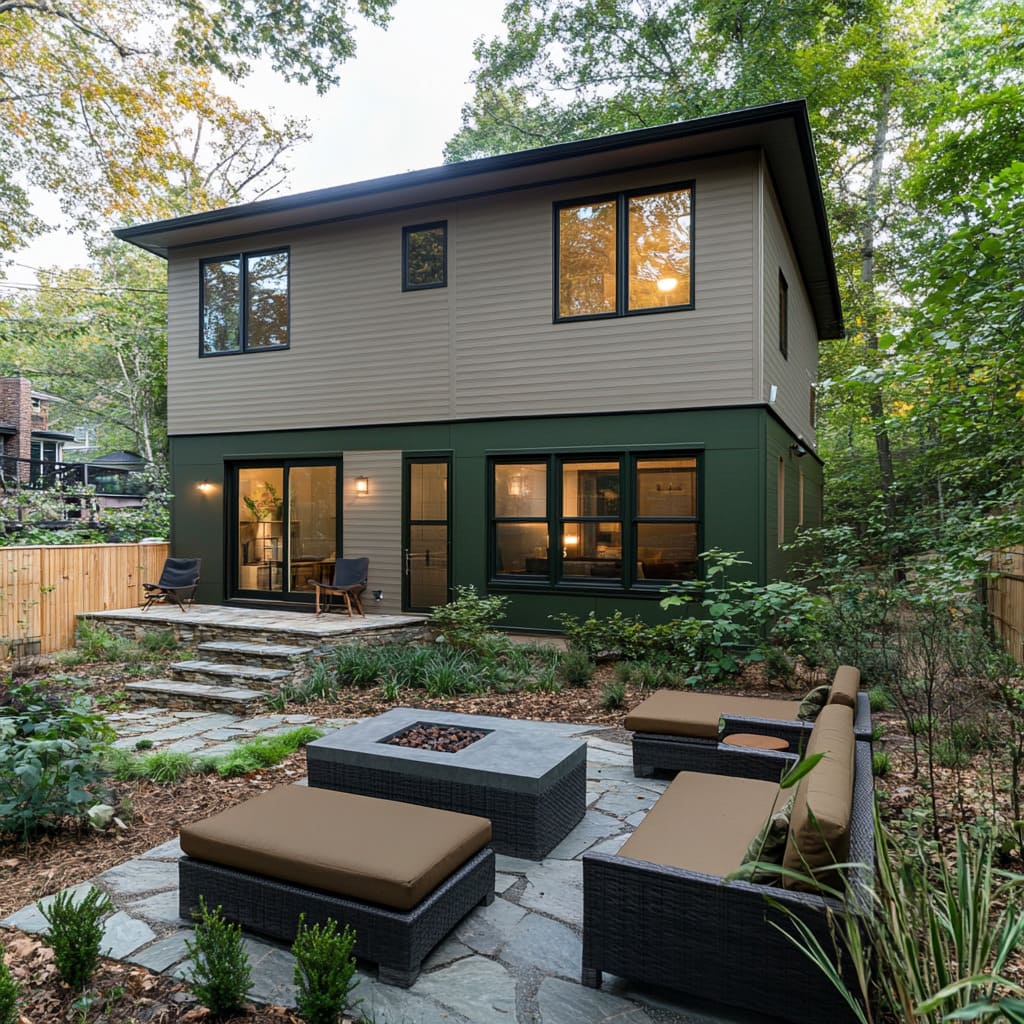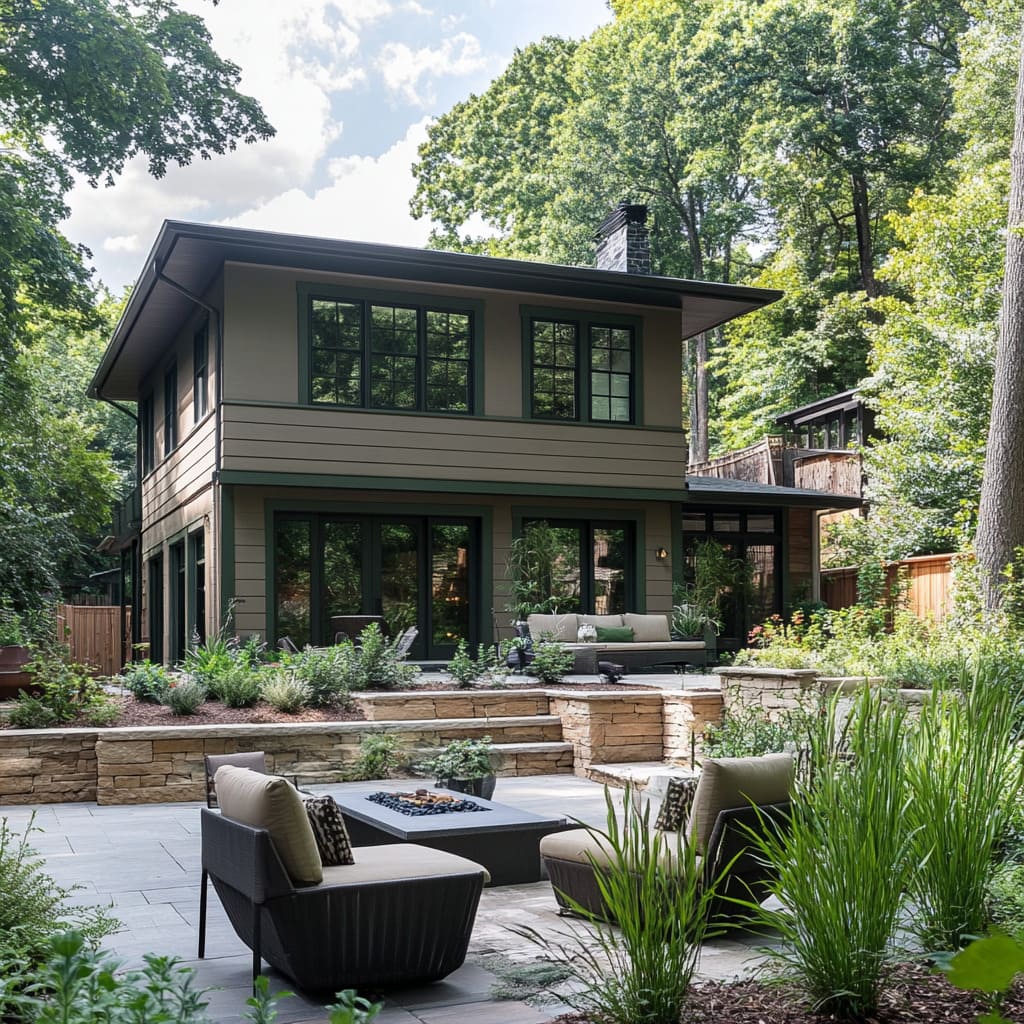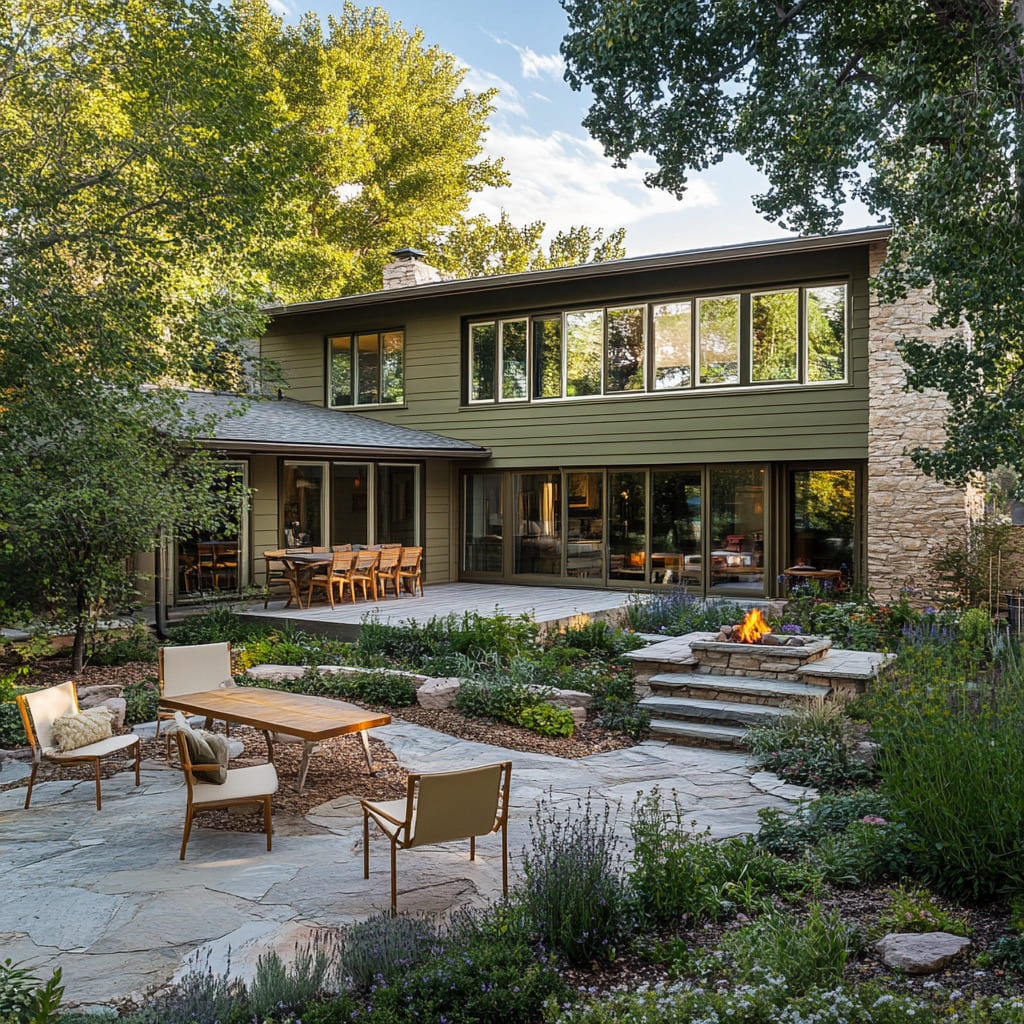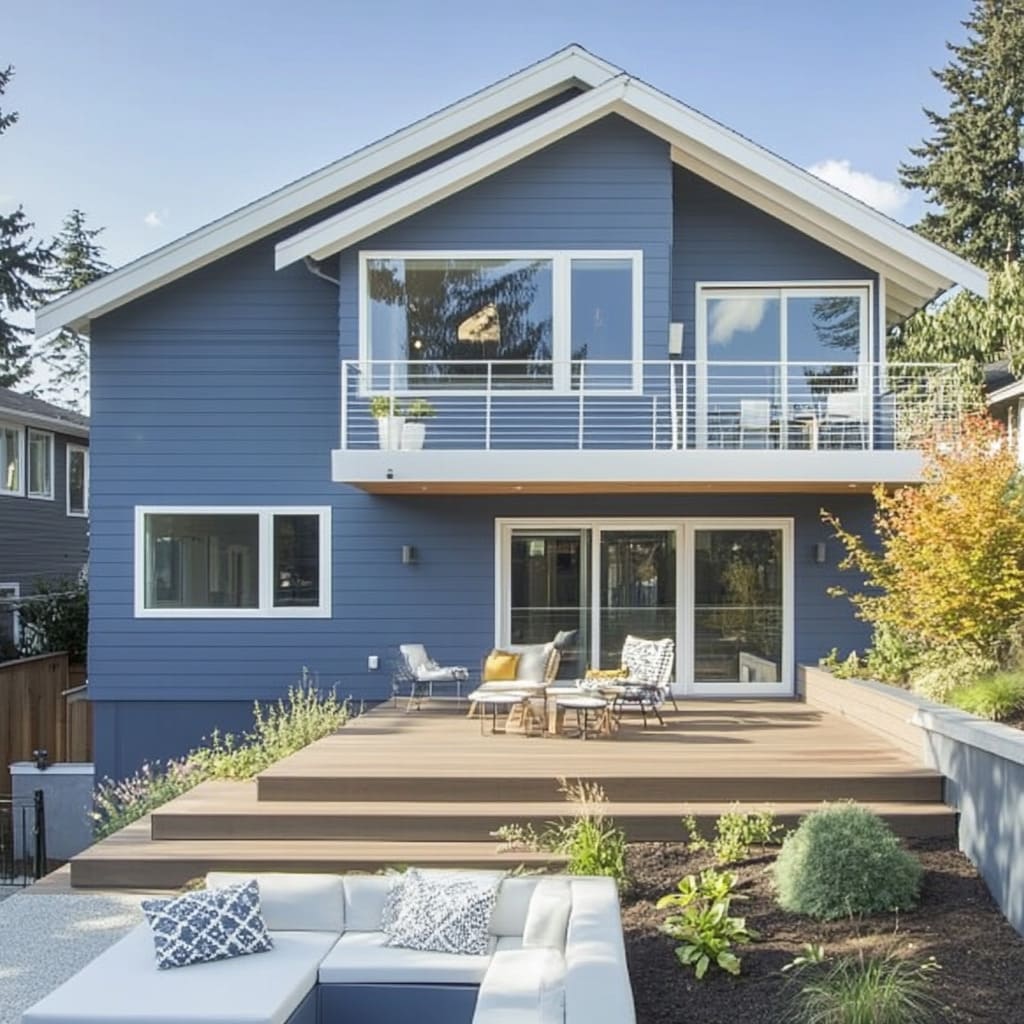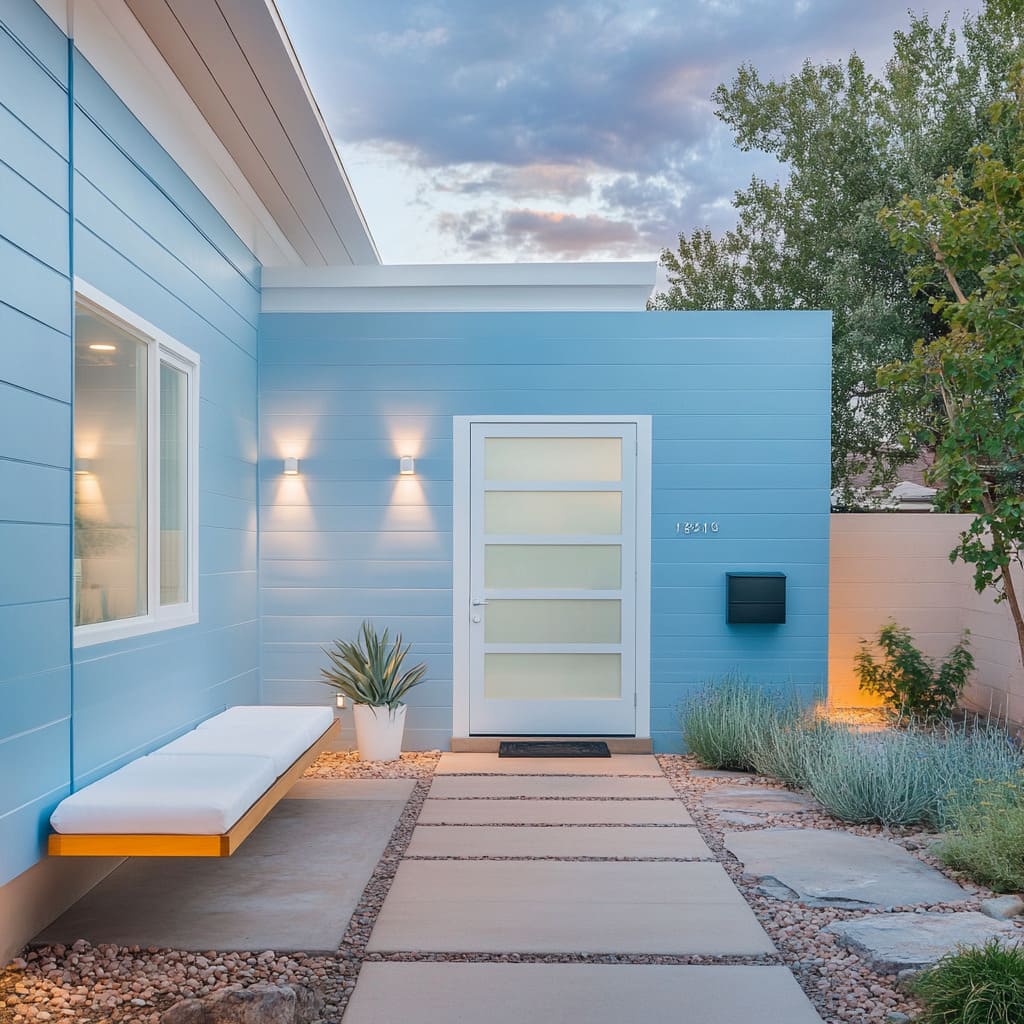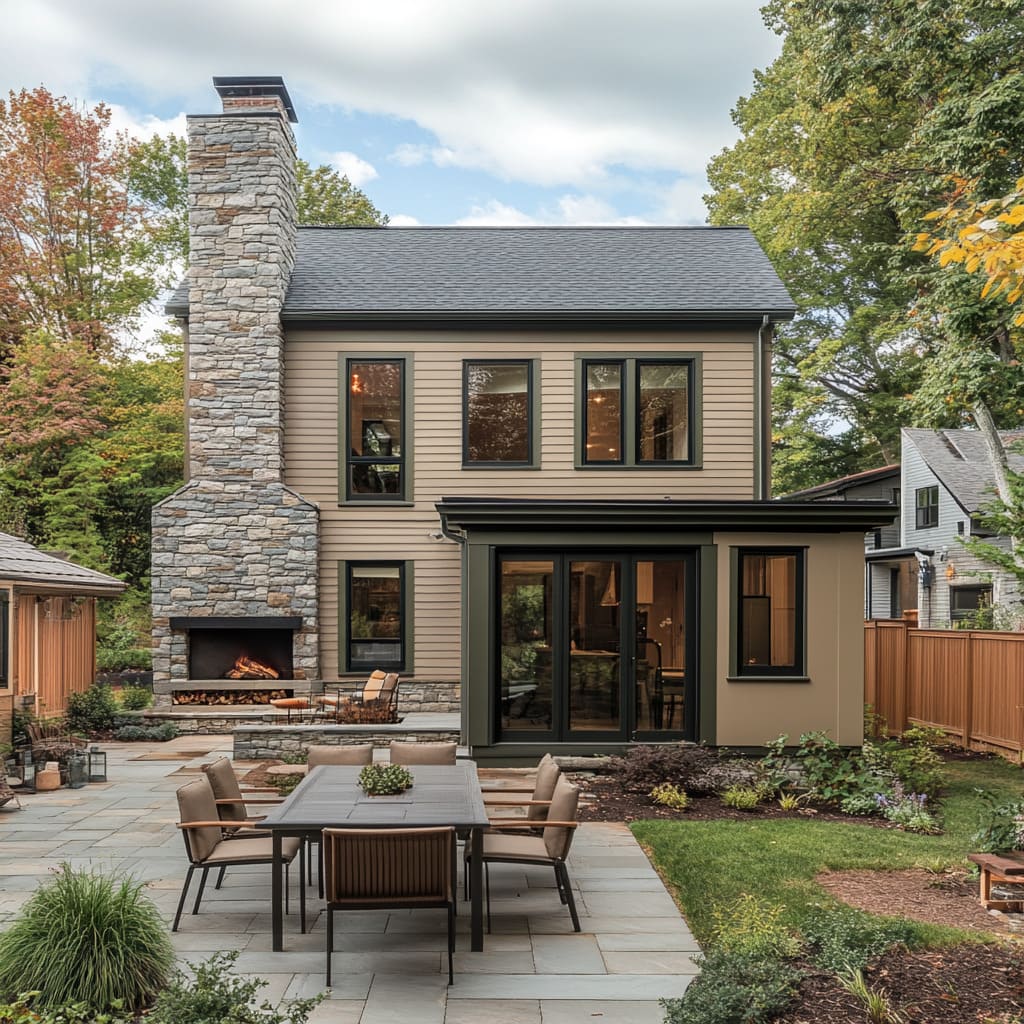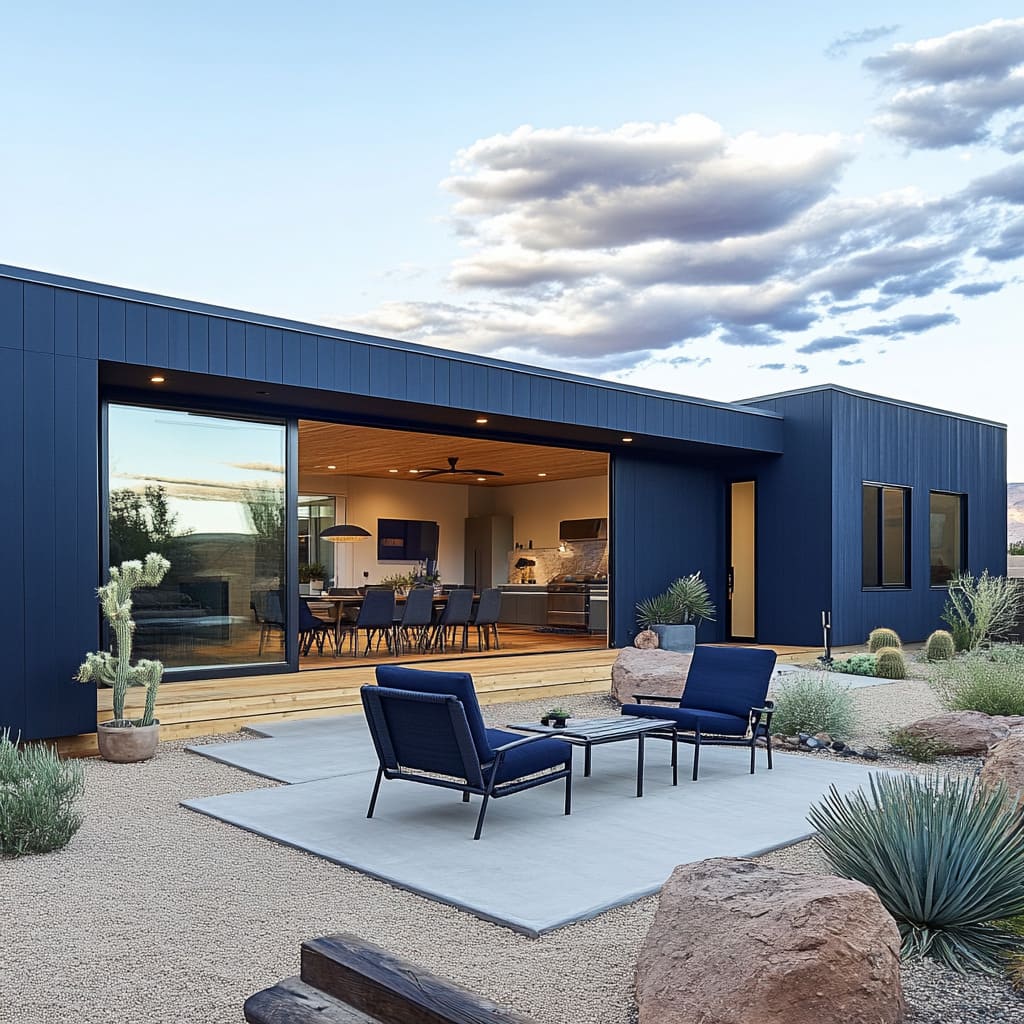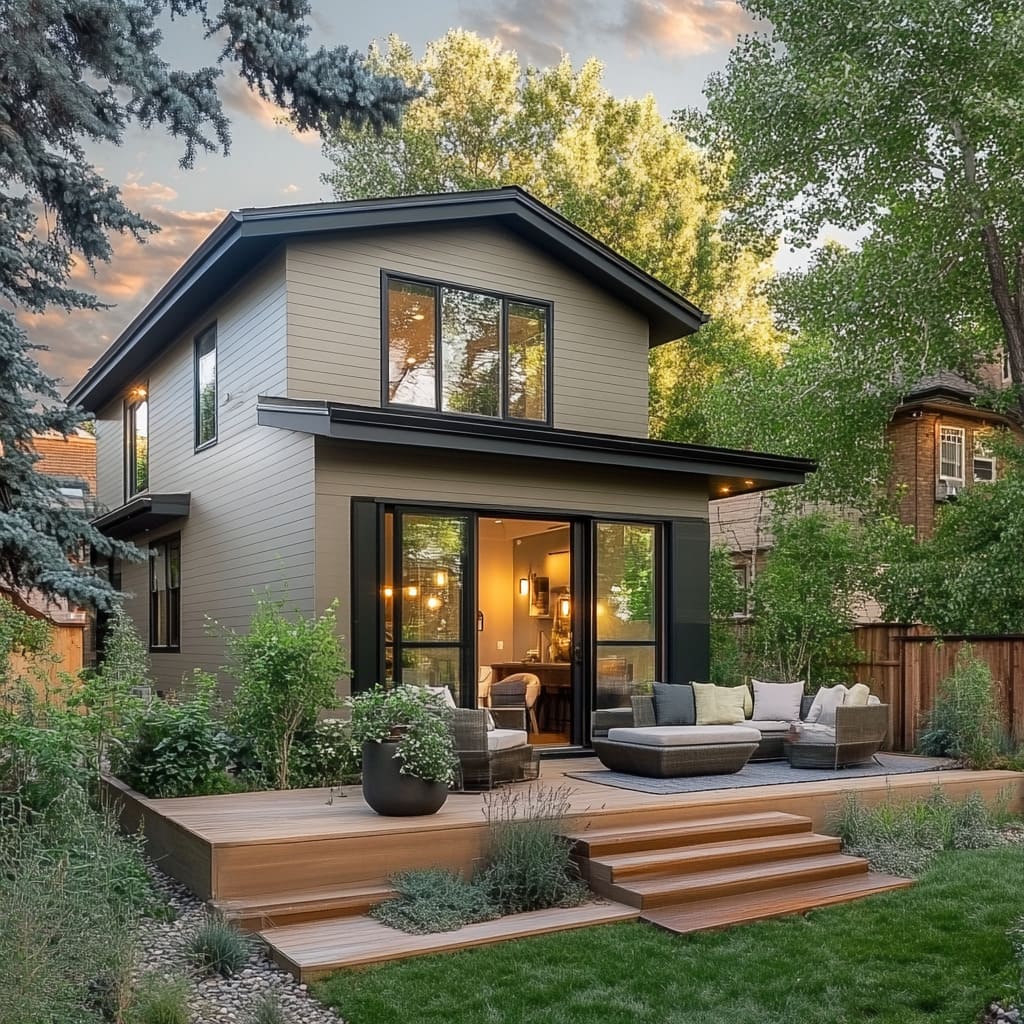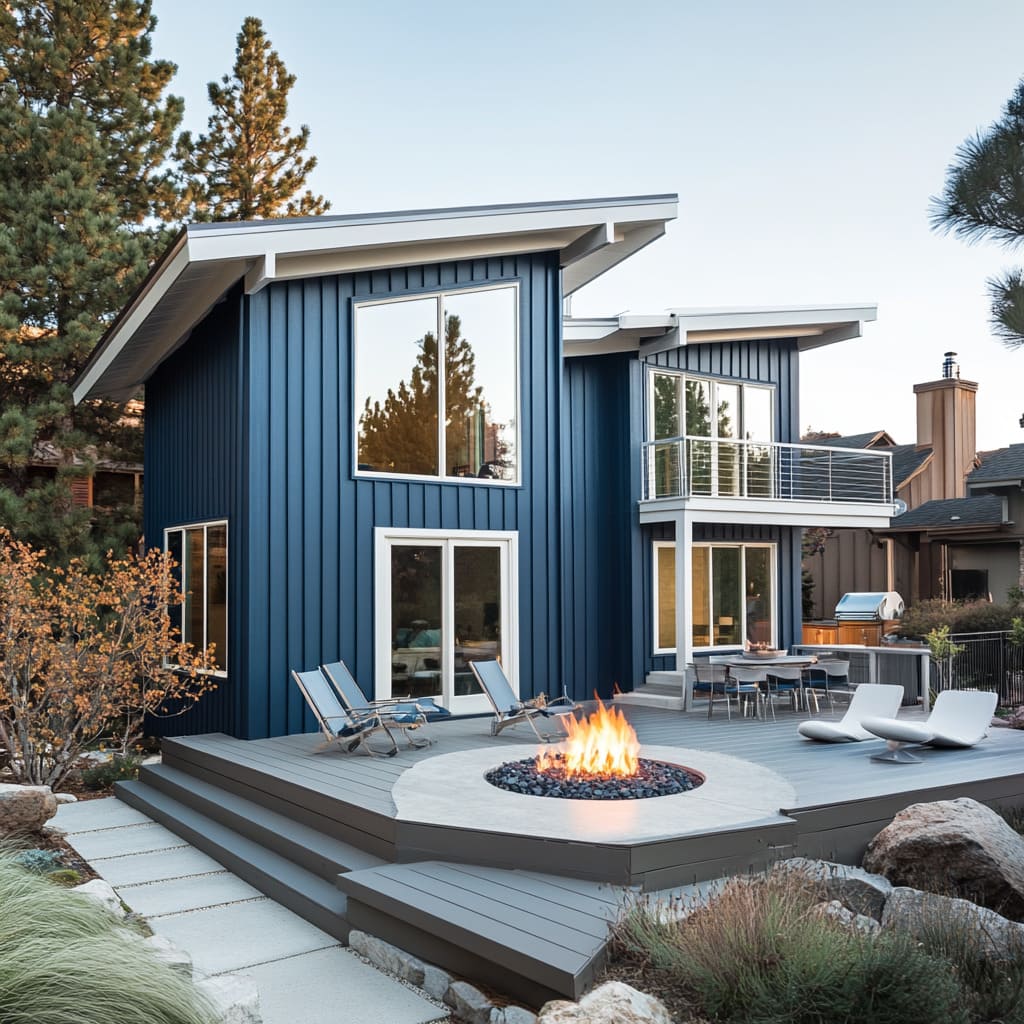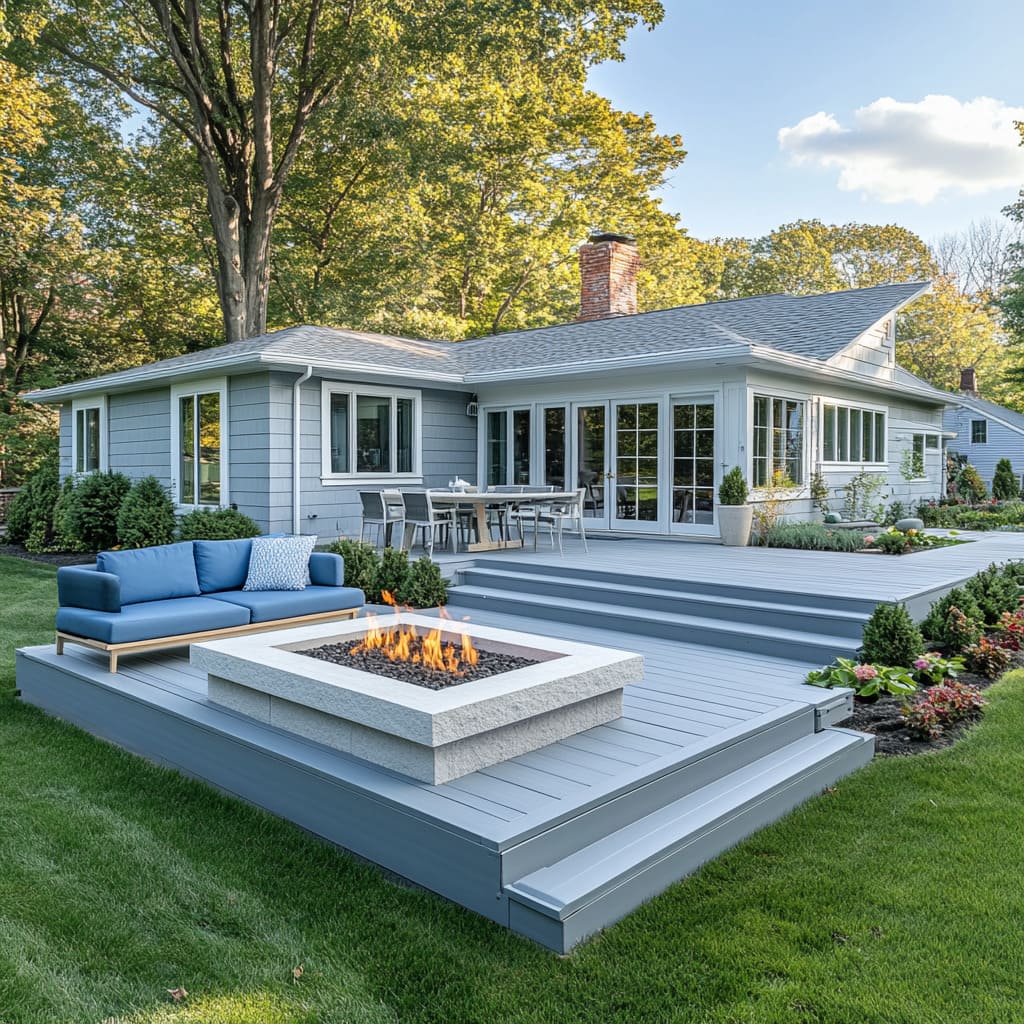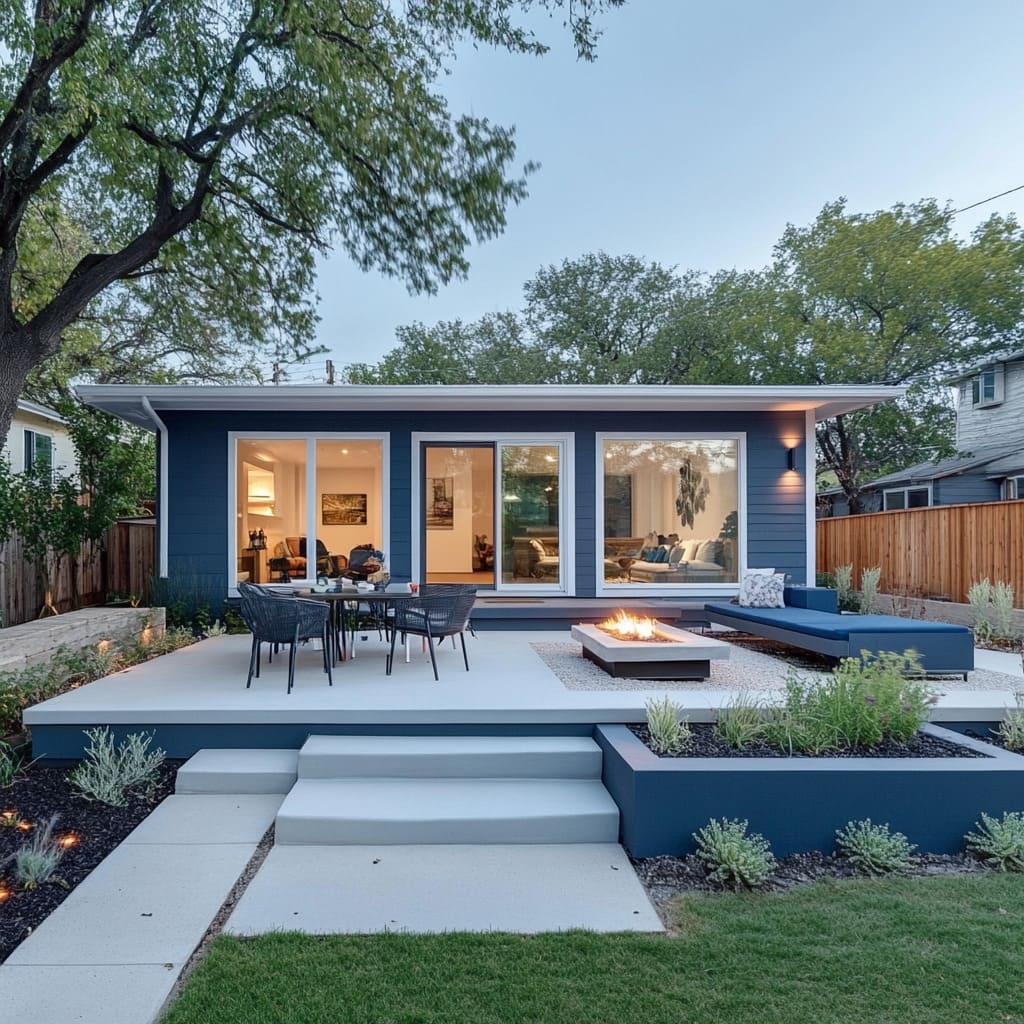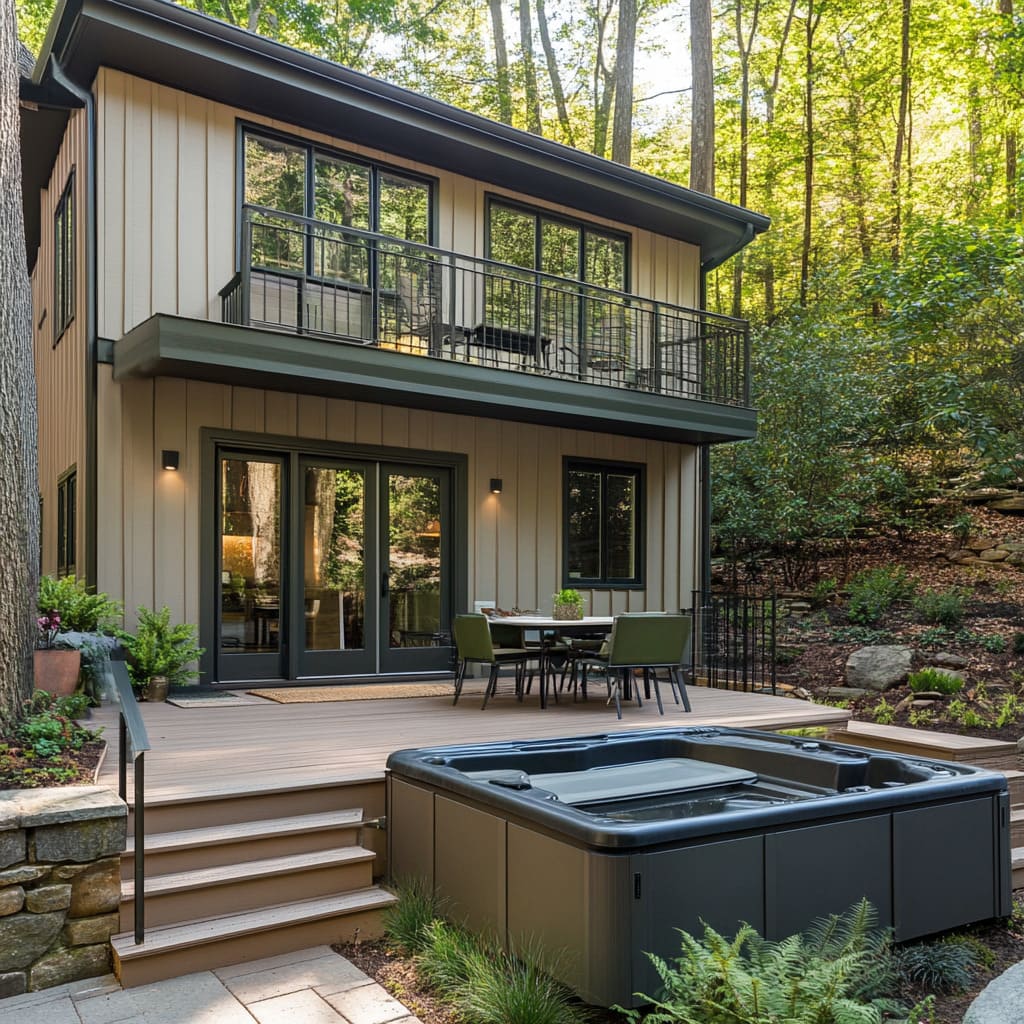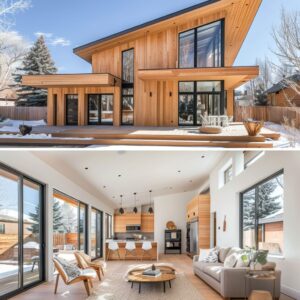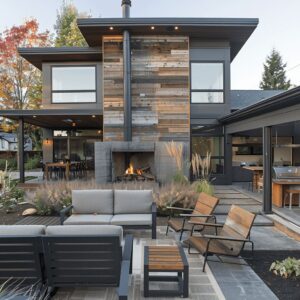Exterior design plays a crucial role in the overall appeal of a home, especially for smaller houses. While limited space may seem like a challenge, the right design choices can transform a small house into a stylish, contemporary dwelling that feels both spacious and inviting.
By focusing on key architectural elements, materials, and landscaping, even the smallest homes can achieve a modern and polished look When it comes to designing the exterior of a small home, thoughtful planning is essential. Every element, from the shape and layout to the choice of colors and materials, can significantly impact the home’s visual appeal and functionality.
By incorporating modern style tiny homes’ principles, homeowners can maximize space while creating an attractive and welcoming exterior. This article will explore various elements that contribute to a stylish small house design, highlighting how thoughtful choices can enhance both aesthetics and usability
Architectural Design and Structure
Emphasis on Clean Lines and Modern Aesthetics
One of the hallmarks of a contemporary house design for a small house is the emphasis on clean lines and simple, geometric shapes. Modern design often favors minimalism, where less is more, and every element serves a purpose.
In tiny home designs, using straight, unadorned lines helps create a sense of order and calm. The simplicity of geometric forms—such as rectangles and squares—contributes to a sleek, uncluttered look that makes the exterior appear more spacious than it actually is.
The choice between flat and pitched roofs can significantly affect both the aesthetics and functionality of small homes. Flat roofs, for example, are a staple in modern architecture and provide a streamlined, minimalist appearance that complements the clean lines of the structure.
They also offer practical benefits, such as allowing for rooftop terraces or gardens, which can add valuable outdoor space to mini house designs
On the other hand, low-pitched roofs add a subtle slope that can create visual interest without overwhelming the small scale of the home. These roofs help with water drainage and can be designed to include overhangs that provide shade and protect from the elements.
Combining flat and low-pitched roofs can bring a dynamic edge to the house design, enhancing the overall visual appeal while offering practical advantages like better rainwater management and added insulation
Balancing Proportions and Creating Visual Interest
Creating a balanced composition is essential in modern style tiny homes, where every inch counts. The use of split-level designs is a clever strategy to add depth and dimension to a small home.
By varying the levels within the structure, designers can create a more dynamic and engaging exterior that draws the eye. This approach not only enhances the visual appeal but also maximizes the use of interior space, offering more room for living areas, storage, or even outdoor terraces.
Techniques to make small homes appear larger often involve manipulating roof heights and incorporating overhangs. For example, varying the height of different sections of the roof can break up the facade and give the impression of a larger, more complex structure.
Overhangs, besides providing practical benefits like shading windows from the sun, also extend the roofline outward, creating a sense of depth and making the home feel more substantial. These elements contribute to the overall harmony of the design, ensuring that all parts of the house work together to create a unified and aesthetically pleasing whole
Maintaining a balanced composition is particularly important in small house designs, as it helps to avoid a cramped or cluttered appearance. Symmetry and proportion play a key role in this regard, guiding the placement of windows, doors, and other architectural features.
By carefully considering these elements, designers can ensure that even the smallest homes feel open, airy, and balanced
Integrating Natural Elements
Incorporating natural elements into the design of a small home can greatly enhance its appeal and help it blend seamlessly with its surroundings. This is especially important in tiny home designs, where the relationship between the built environment and the natural landscape is often a key consideration.
Using natural materials such as stone, wood, and composite materials can add texture and warmth to the exterior, creating a welcoming and harmonious look
Stone facades or accents, for example, can bring a sense of solidity and timelessness to a small house design. Wood, on the other hand, adds warmth and a connection to nature that is both aesthetically pleasing and sustainable.
Whether used for siding, trim, or outdoor decking, wood can complement the clean lines and modern aesthetic of the home while providing a natural counterpoint to more contemporary materials like glass and metal
Composite materials are also a popular choice in modern style tiny homes, offering the look of natural wood or stone without the maintenance requirements. These materials are durable, weather-resistant, and available in a wide range of colors and textures, allowing for great flexibility in design.
By integrating these natural elements, small homes can achieve a look that is both stylish and in harmony with the environment, enhancing their appeal and livability. In conclusion, the architectural design and structure of small homes play a vital role in determining their overall aesthetic and functionality.
By focusing on clean lines, balanced proportions, and natural elements, homeowners can create stylish and contemporary exteriors that maximize space and enhance the connection with their surroundings. Whether through thoughtful roof designs, clever use of levels, or the integration of natural materials, every small home has the potential to look modern and inviting, proving that size does not limit style
Color and Material Palette
Modern Color Choices
When designing the exterior of a small home, selecting the right color palette is crucial. The best colors for small house exteriors often include shades that enhance the architectural features while creating a sense of space and style.
Popular color schemes for modern small houses frequently feature deep navy, soft gray, and mint green. These colors are favored for their ability to convey a contemporary aesthetic while still maintaining a warm and inviting feel
Deep navy, for instance, is a bold choice that can make a small home feel grounded and sophisticated. This color works particularly well when paired with white or light gray trim, creating a striking contrast that highlights the clean lines of modern architecture.
Similarly, soft gray is a versatile option that can serve as a neutral backdrop, allowing other design elements like landscaping and trim to stand out. Mint green offers a fresh, unexpected twist that brings a sense of tranquility and lightness, making it ideal for small cabin designs nestled in natural settings.
The use of color can also significantly impact the perception of space. Lighter hues, such as pale gray or soft white, can make a small home appear larger and more open, while darker shades like navy or charcoal add depth and drama.
These exterior color schemes for small houses are not just about aesthetics; they also play a psychological role in shaping how a home is perceived. For example, a bright exterior can convey energy and openness, whereas muted tones might suggest calm and sophistication.
When choosing small home exterior paint colors, it’s essential to consider the mood you want to create and how the colors will interact with natural light throughout the day
Selection of Durable and Low-Maintenance Materials
In addition to choosing the right colors, selecting durable and low-maintenance materials is vital for the longevity and upkeep of a small home’s exterior. Materials like composite decking, aluminum, and fiber cement siding are excellent choices for small modern house designs because they offer both durability and ease of maintenance.
Composite decking, for instance, provides the look of natural wood without the susceptibility to rot, warping, or insect damage. This material is perfect for outdoor spaces like patios or decks, where weather resistance is a priority
Aluminum is another popular choice for window frames and trim. It is lightweight, resistant to rust, and available in a variety of finishes, allowing for a clean, modern look that complements the overall design of the home.
For siding, fiber cement is a highly durable material that can mimic the appearance of wood or stucco but with much greater resistance to moisture and fire. It’s an excellent option for small 2 story house designs where both aesthetic appeal and safety are important considerations.
Choosing materials that require minimal upkeep not only reduces long-term maintenance costs but also helps maintain a high-end appearance over time. High-quality materials can withstand the elements and daily wear, ensuring that the exterior remains attractive and functional for years to come.
In small home designs, where every detail counts, investing in durable materials can make a significant difference in the overall appeal and longevity of the home
Combining Textures and Finishes for Visual Appeal
Texture plays a critical role in enhancing the visual interest of a small house exterior. Combining smooth finishes with textured materials can create a dynamic and engaging facade that adds depth and character.
For example, pairing stucco with board-and-batten siding can create a pleasing contrast that draws the eye and emphasizes the different architectural elements of the home. Stucco provides a smooth, polished finish that complements the clean lines of modern design, while board-and-batten adds a vertical element that can make the structure appear taller and more stately
Using a mix of textures can also help break up large expanses of wall, adding dimension without overwhelming the space. This approach is particularly effective in small cabin designs, where the goal is to blend with the natural surroundings while still standing out as a well-designed structure.
For example, a combination of stone, wood, and metal elements can create a rustic yet refined look that complements the cabin’s setting while enhancing its architectural appeal
Incorporating different finishes, such as matte, glossy, or textured, can also enhance the exterior’s overall look. A matte finish might be ideal for siding, offering a subtle, understated look that contrasts nicely with glossy accents on doors or windows.
Textured finishes, like rough-cut stone or wood grain, can add a natural element that brings warmth and character to the design. By carefully selecting and combining these elements, even the smallest homes can achieve a sophisticated and visually appealing exterior
Windows and Doors: Maximizing Light and Views
Importance of Large Windows and Glass Doors
Large windows and sliding glass doors are vital elements in small home designs, as they allow natural light to flood the interior spaces, creating an open and airy feel. These features not only enhance the aesthetic appeal of the home but also improve its functionality by connecting the interior with the exterior.
In a best small house design, expansive windows are often placed strategically to maximize views of the surrounding landscape while maintaining privacy.
For example, a large picture window in the living room can frame a beautiful view, serving as a focal point and bringing the outdoors in. Sliding glass doors that open onto a patio or deck further blur the line between indoor and outdoor spaces, making the home feel larger and more integrated with its environment.
Placement strategies should consider both the sun’s path and the desired level of privacy, ensuring that the windows provide ample light without compromising the home’s comfort or security
Framing Choices and Aesthetics
The choice of window frames can significantly impact the overall look of a small home’s exterior. Sleek, minimalist frames, often made of aluminum or vinyl, are ideal for modern designs as they complement the clean lines and contemporary aesthetic.
Black aluminum frames, in particular, are a popular choice for small modern houses because they provide a sharp contrast against lighter exteriors, adding a touch of sophistication and style. These frames are not only visually appealing but also practical.
Aluminum frames are lightweight, durable, and resistant to corrosion, making them suitable for a variety of climates. The minimalist design of these frames ensures that the focus remains on the views and natural light, rather than on the window itself, enhancing the sense of openness and space
Energy Efficiency Considerations
When selecting windows and doors for a small home, energy efficiency is a crucial factor to consider. Double-paned windows with low-emissivity (low-E) coatings are an excellent choice for reducing heat loss in winter and minimizing heat gain in summer, thereby lowering energy costs and improving overall comfort.
These windows help maintain a consistent indoor temperature, making the home more energy-efficient and environmentally friendly. Balancing the need for natural light with the requirement for insulation is essential in small home designs.
Large windows and glass doors can significantly impact the home’s thermal performance, so it’s important to choose products that offer the best of both worlds: ample natural light and high energy efficiency. This balance ensures that the home remains bright and welcoming throughout the year while keeping energy costs under control.
By carefully selecting the right colors, materials, windows, and doors, homeowners can create a stylish and modern exterior that enhances the beauty and functionality of their small homes. Whether opting for a bold navy facade with sleek black frames or a softer palette of grays and greens, the choices made in the color and material palette play a vital role in defining the character and appeal of any small house
Outdoor Living Spaces: Extending the Home
Outdoor living spaces play a vital role in enhancing the functionality and appeal of small modern homes. By thoughtfully designing these areas, homeowners can effectively extend their living spaces beyond the walls of the house, creating versatile environments for relaxation, entertainment, and everyday living.
For tiny house designs, maximizing outdoor areas is crucial to achieving a sense of openness and comfort. This section explores various design strategies for creating functional and stylish outdoor spaces that complement a small modern house design
Designing Functional and Stylish Decks and Patios
Decks and patios are essential elements in any contemporary small house design, especially for those with limited interior space. These outdoor areas provide additional living space, allowing homeowners to enjoy the outdoors while staying close to the comforts of home.
A well-designed deck or patio can serve multiple purposes, from dining and entertaining to relaxing and gardening
One effective design idea for small house exterior ideas is the use of multi-level decks. By creating multiple levels, homeowners can define different zones for various activities, such as a dining area on one level and a lounging area on another.
This approach not only maximizes the use of available space but also adds visual interest and depth to the overall design. Integrated seating areas, such as built-in benches or planters, can further enhance the functionality of these spaces.
These elements can be constructed from durable materials like composite wood or natural stone to match the house’s aesthetic while providing long-lasting durability
Incorporating Fire Pits and Outdoor Kitchens
Adding a fire pit or outdoor kitchen can greatly enhance the usability and appeal of outdoor living spaces in small home designs. Fire pits provide a natural gathering point for family and friends, offering warmth and ambiance on cool evenings.
They can be designed in various shapes and materials to match the home’s style, from modern concrete and metal to rustic stone
When considering materials for a fire pit, it’s important to choose those that are both heat-resistant and weatherproof. Concrete, stone, and metal are popular choices due to their durability and ability to retain heat.
For small modern house designs, a sleek, minimalist fire pit with clean lines can complement the overall aesthetic and create a cohesive look
Outdoor kitchens are another popular addition to small house exterior ideas. These spaces allow for cooking and dining outside, making them perfect for entertaining.
When designing an outdoor kitchen, consider using materials that can withstand the elements, such as stainless steel for appliances and countertops, and treated wood or stone for cabinetry and storage. A small, well-equipped kitchen can add a touch of luxury to any outdoor space, enhancing the home’s functionality and value
Furniture Selection and Arrangement
Choosing the right furniture is essential to creating a comfortable and inviting outdoor living area. For small modern homes, it’s important to select furniture that is both durable and in harmony with the home’s design.
Materials like aluminum, teak, and all-weather wicker are excellent choices for outdoor furniture due to their resistance to the elements and minimal maintenance requirements. When arranging furniture, consider how the pieces will be used and how they can be positioned to maximize space.
In tiny house designs, opting for multifunctional furniture—such as benches with built-in storage or tables that can expand—can help save space while providing flexibility for different activities. Arrange seating to encourage conversation and create cozy, intimate spaces.
Adding outdoor rugs, cushions, and throw pillows can also enhance comfort and style, making the outdoor areas feel like an extension of the indoor living space
Landscaping and Hardscaping: Blending Home with Nature
Landscaping and hardscaping are critical components in the exterior design of small homes. By thoughtfully selecting plants and materials, homeowners can create a harmonious blend between the built environment and the natural surroundings.
Effective landscaping not only enhances the visual appeal of a home but also adds to its functionality and sustainability
Low-Maintenance Landscaping Ideas
For small home designs, low-maintenance landscaping is key to keeping upkeep manageable while maintaining a beautiful exterior. Drought-tolerant plants, native species, and succulents are excellent choices for easy upkeep and sustainability.
These plants are well-adapted to local climates, requiring less water and care, which makes them ideal for small home exteriors where space and resources are limited. Incorporating a mix of ground covers, shrubs, and ornamental grasses can add texture and color to the landscape while reducing the need for frequent maintenance.
For a contemporary small house design, choosing plants with clean lines and architectural shapes can complement the modern aesthetic of the home. Raised beds or planter boxes can also be used to add greenery in a controlled and organized manner, keeping the overall look tidy and intentional
Integrating Hardscaping Elements
Hardscaping elements such as natural stone, gravel, and pavers are essential in creating visually appealing pathways and borders that complement a small home’s architecture. These materials add structure to the landscape, guiding movement and defining spaces within the garden.
Stone pathways can create a rustic charm, while gravel and pavers offer a more modern, clean-lined approach. Design ideas for hardscape features in small home exteriors might include stepping stone paths leading to different zones, such as a garden or seating area.
A gravel border around the house can add a neat, polished look while ensuring proper drainage away from the foundation. Hardscaping also provides a practical surface for high-traffic areas, reducing soil erosion and keeping the landscape looking well-maintained
Creating a Seamless Transition from Indoors to Outdoors
Creating a seamless transition between indoor and outdoor spaces is crucial in contemporary small house design. Large glass doors, such as sliding or folding models, allow for an unobstructed view of the outdoors and can be opened fully to connect the indoor and outdoor spaces.
This approach not only enhances the sense of openness but also makes the outdoor space feel like an extension of the home’s interior. Using consistent flooring materials, such as wood or tile, from the inside of the home to the outdoor deck or patio can help blur the lines between the two spaces.
Additionally, maintaining a cohesive color palette between indoor and outdoor elements can create a unified look that enhances the overall design. By integrating these strategies, small homes can maximize their usable space and create a more fluid, flexible living environment
Lighting: Enhancing Ambiance and Functionality
Proper lighting is essential to enhancing both the ambiance and functionality of outdoor living spaces. With strategic lighting, homeowners can highlight architectural features, improve safety, and create a warm, inviting atmosphere for evening gatherings.
Strategic Use of Exterior Lighting
Different types of lighting fixtures can be used to highlight specific architectural features and landscape elements. Pathway lighting is essential for safety, guiding guests along walkways and steps.
Recessed lighting, installed under eaves or in decking, provides subtle illumination that enhances both security and ambiance. Accent lighting can be used to highlight focal points, such as a statement tree, a water feature, or a sculpture, adding depth and drama to the outdoor space.
For exterior design ideas for small houses, it’s important to use a combination of lighting types to create layers of light that add dimension and warmth
Balancing Ambiance with Practicality
When planning exterior lighting, it’s important to strike a balance between creating an inviting atmosphere and ensuring functional illumination. Soft, warm lighting can create a cozy ambiance for outdoor dining or relaxing, while brighter lights are needed for task areas, such as an outdoor kitchen or entrance.
Careful placement of lighting fixtures is crucial to achieving this balance. For example, wall-mounted sconces can provide general illumination without overwhelming the space, while spotlights can be directed to highlight specific areas or features.
By considering both aesthetics and practicality, small modern homes can enjoy beautifully lit outdoor spaces that are both safe and inviting
Unique Design Elements and Customization
Adding unique design elements and customized features can transform a small home’s exterior, giving it a distinct personality and a sense of individuality. For homeowners looking to infuse their personal style into their homes, there are several creative options that can make a small house stand out while also adding practical benefits
Personalized Architectural Features
One of the most effective ways to customize a small home is by incorporating personalized architectural features that reflect the homeowner’s taste and lifestyle. Custom-built benches, for example, can be both functional and decorative.
Placed along a walkway or on a deck, a bench with a unique design can serve as a seating area while also adding a focal point to the exterior space. Similarly, planters can be custom-made to fit specific areas, such as windowsills, steps, or garden edges, and can be filled with favorite plants or herbs, adding a personal touch and enhancing the home’s curb appeal.
Outdoor art installations, such as sculptures, wall-mounted decorations, or even murals, offer another avenue for personalization. These elements can be designed to complement the house’s architecture and color palette, adding a layer of visual interest and character.
For instance, a modern tiny house design might benefit from a sleek, minimalist metal sculpture that enhances the home’s clean lines and contemporary feel. Meanwhile, one story tiny homes might incorporate hand-painted tiles or rustic wooden carvings to add a unique flair that blends seamlessly with the natural surroundings
Homeowners should think about their preferences and how these can be reflected in the exterior design. For example, incorporating a custom gate or fence that features intricate ironwork or woodwork not only adds security but also serves as a stylish statement piece.
Personal touches like these make a home feel more inviting and tailored to the people who live there, setting it apart from other properties in the neighborhood
Using Contrast and Color Blocking
Contrast and color blocking are powerful tools in exterior design, particularly for small contemporary homes where every visual element needs to contribute to the overall aesthetic. By using contrasting colors and materials, homeowners can highlight certain aspects of the house, creating focal points that draw the eye and add depth to the exterior.
For example, painting the trim in a bold color that contrasts with the main house color can accentuate architectural details, such as windows and doors. This approach works well with modern exterior design for small houses, where clean lines and sharp angles are prevalent.
Black trim against a white or light gray facade creates a striking effect, adding a modern edge and making the structure appear more defined and substantial. Color blocking involves using large, solid areas of color to create visual interest and emphasize different sections of the house.
In small two storey house designs, color blocking can be used to differentiate between the upper and lower levels, giving each its own identity while maintaining a cohesive look. For instance, a lighter color on the upper story and a darker shade on the lower can create a grounded, balanced appearance that enhances the home’s proportions and adds visual height.
This technique can also be applied to materials, where different textures and finishes are used to distinguish various parts of the house. For example, combining smooth stucco with textured wood panels can create a dynamic contrast that highlights the home’s architectural lines and adds depth.
This approach not only enhances the visual appeal but also allows for creative expression, making the exterior more engaging and visually interesting
Tips for Maximizing Small House Exteriors
When working with limited space, thoughtful planning and smart design choices are essential to maximize the functionality and visual appeal of small home exteriors. By focusing on multifunctional elements and considering sustainability, homeowners can create attractive and practical outdoor spaces that complement their homes
Smart Design Choices for Small Spaces
Maximizing the exterior space of small homes involves more than just choosing the right colors and materials; it requires a strategic approach to design. Minimalistic and multifunctional designs can greatly enhance small exteriors, making them feel larger and more versatile.
For example, integrated seating areas that double as storage units can save space while providing both function and comfort. Similarly, foldable or stackable furniture pieces allow for flexibility in use, making it easy to transition from a dining area to a lounging space as needed.
In the best small home designs, features like vertical gardens or wall-mounted planters can add greenery without taking up valuable floor space. These elements not only improve the aesthetic appeal but also contribute to a more relaxing and natural environment.
Strategic placement of mirrors or reflective surfaces can also create the illusion of a larger area, enhancing the sense of openness
For small modern home designs, it’s crucial to maintain a sense of balance and proportion. Avoid overcrowding the space with too many decorative elements or bulky furniture.
Instead, opt for sleek, streamlined pieces that complement the home’s architecture and maintain a clean, uncluttered look. This approach ensures that every element has a purpose, contributing to a cohesive and harmonious design
Sustainability Considerations
Incorporating sustainable practices into the exterior design of small houses is not only environmentally responsible but also cost-effective in the long run. Using eco-friendly materials, such as reclaimed wood, recycled metal, or sustainable composites, can reduce the environmental impact while still providing durability and style.
These materials are often just as strong as their conventional counterparts but come with the added benefit of reducing waste and conserving natural resources
Energy-efficient solutions are also vital for modern small home exteriors. Installing solar panels, rainwater harvesting systems, and energy-efficient lighting can help reduce utility bills and make the home more self-sufficient.
Choosing native plants and drought-tolerant landscaping reduces water consumption and creates a more sustainable outdoor environment that requires less maintenance. Additionally, selecting high-quality insulation materials for walls and roofs can improve energy efficiency by keeping the home cooler in the summer and warmer in the winter
By integrating these sustainable practices into the design process, homeowners can create beautiful, functional, and eco-friendly exteriors that not only enhance the look of their homes but also contribute to a healthier planet
Conclusion
The exterior design of a small home is a reflection of the homeowner’s style and creativity. Through thoughtful planning, smart design choices, and a commitment to sustainability, even the smallest homes can achieve a modern and stylish exterior that maximizes space and functionality.
Whether through unique architectural features, strategic use of color and texture, or sustainable materials, there are endless opportunities to enhance the beauty and utility of small home exteriors. By exploring these creative and practical solutions, homeowners can transform their properties into inviting, stylish, and efficient living spaces that stand the test of time

